
Photos via Danh Phan
Tokyo Auto Salon is one of the – if not the – world’s largest and most innovative tuning festivals. Just after the cusp of the New Year unfolds, the Makuhari Messe in Tokyo, Japan hosts this assembly of the Land of the Rising Sun’s top-tier OEM and aftermarket companies, to showcase what the Japanese automotive industry has in store for the world. With an incredible number of vehicles on display from hundreds of different vendors, the show unveils fresh new body kit designs, wheels, performance modifications, and accessories to more than 300,000 attendees, while simultaneously shaping the automotive culture followed by the rest of the world. It’s quite a massive event, so we’ll be splitting our coverage up into two parts, the second of which will publish next week. Let’s get started with the first…
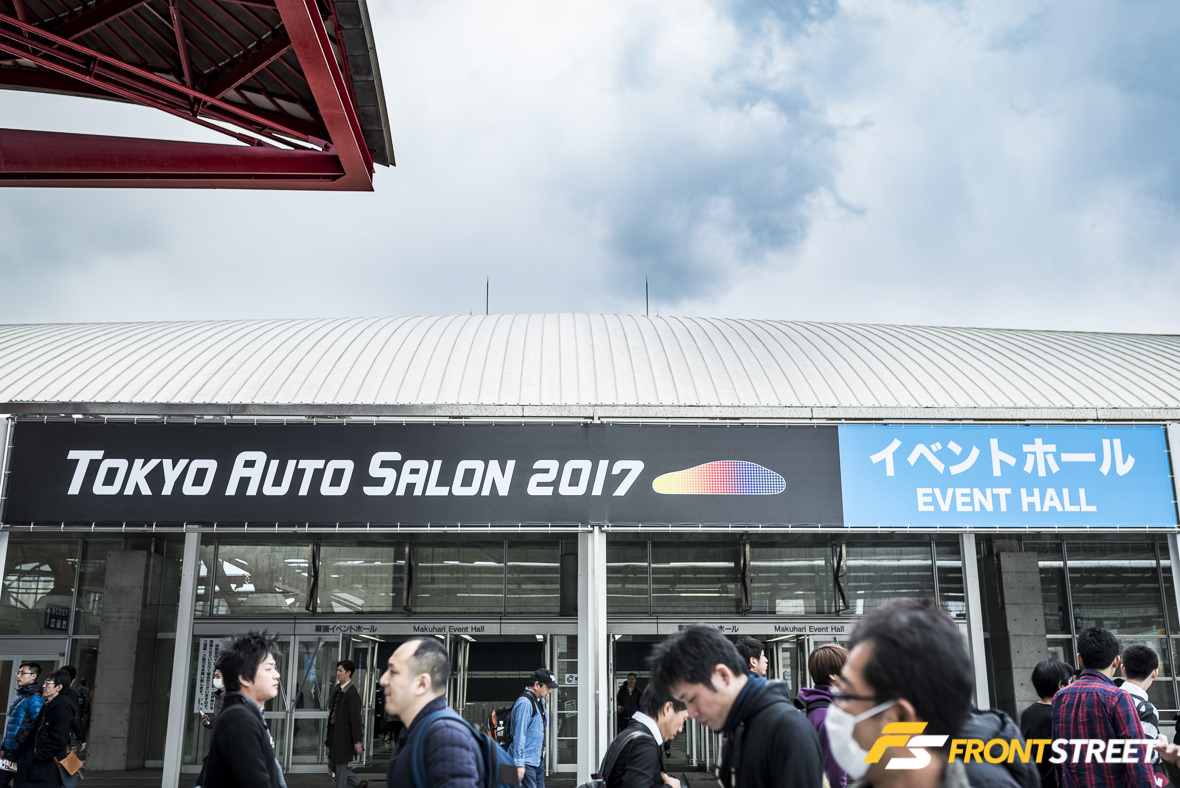
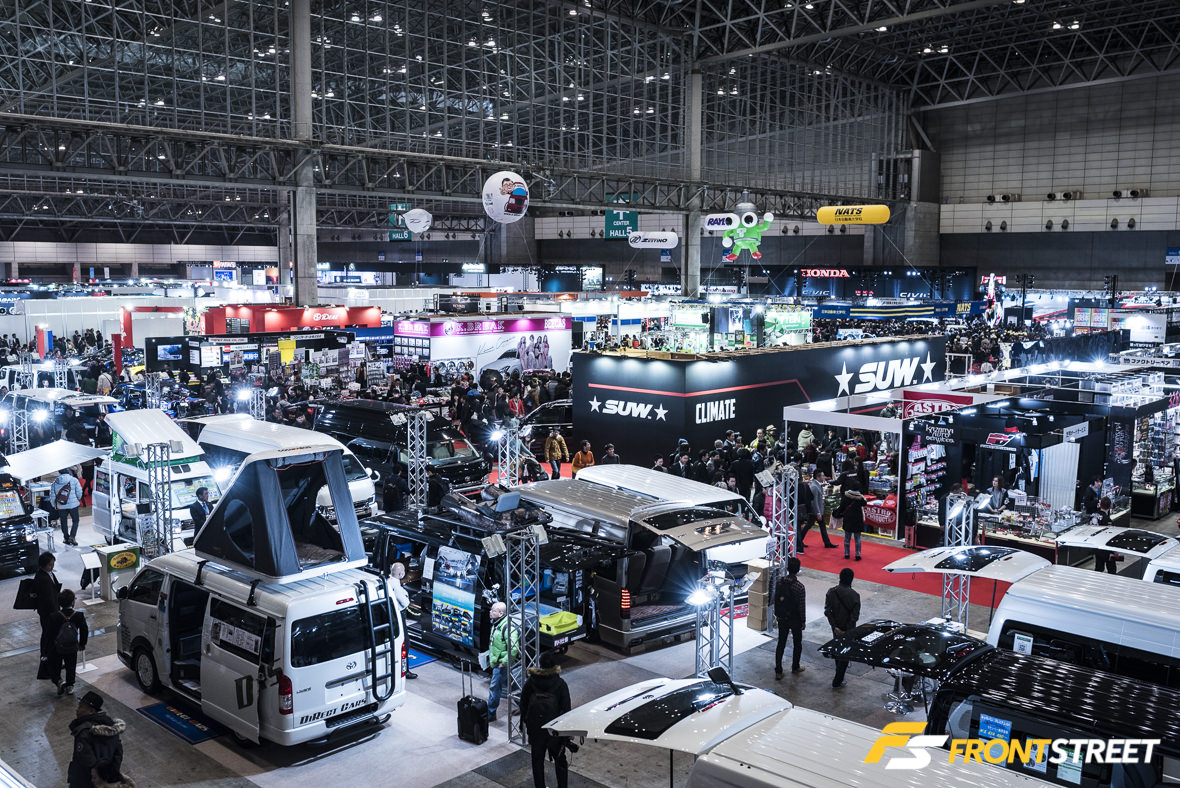
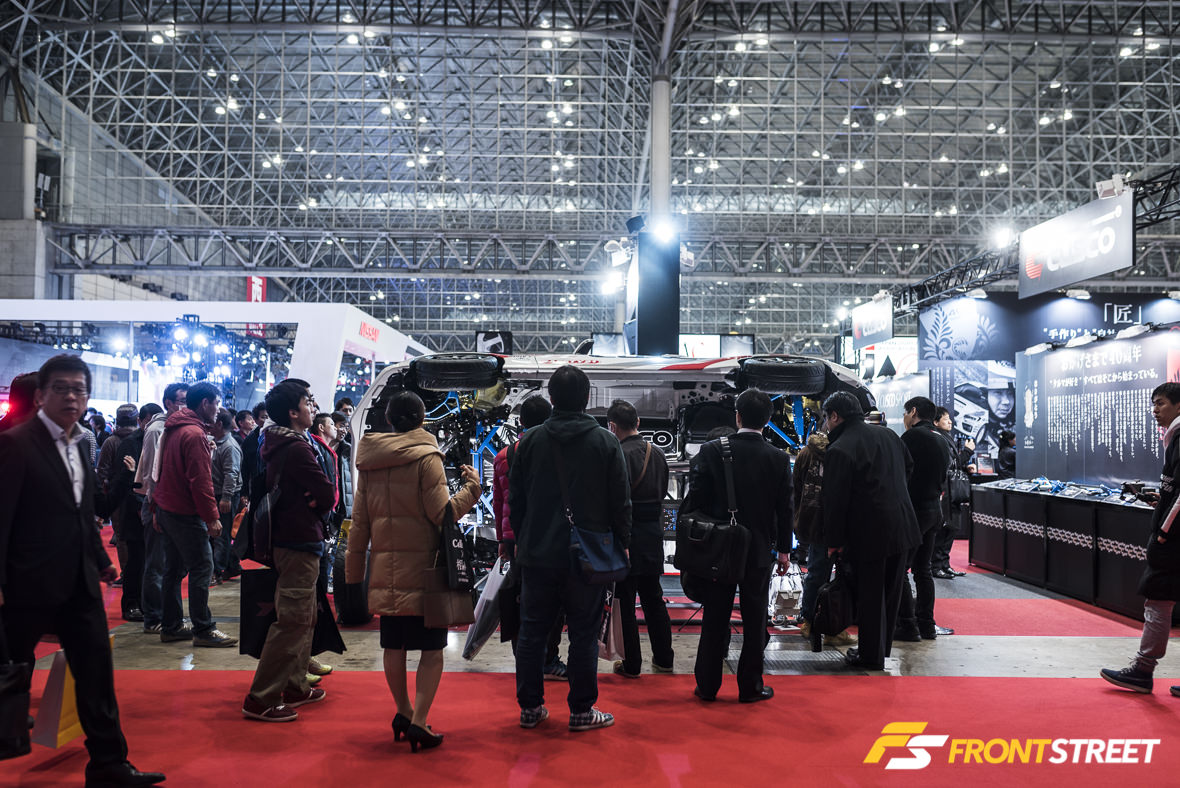
Front Street was fortunate to have our correspondent, Danh Phan, on site to record these automotive treasures, and thanks to the Internet, he transferred them 6,700 miles back to us in the United States in just minutes…what a time to be alive!
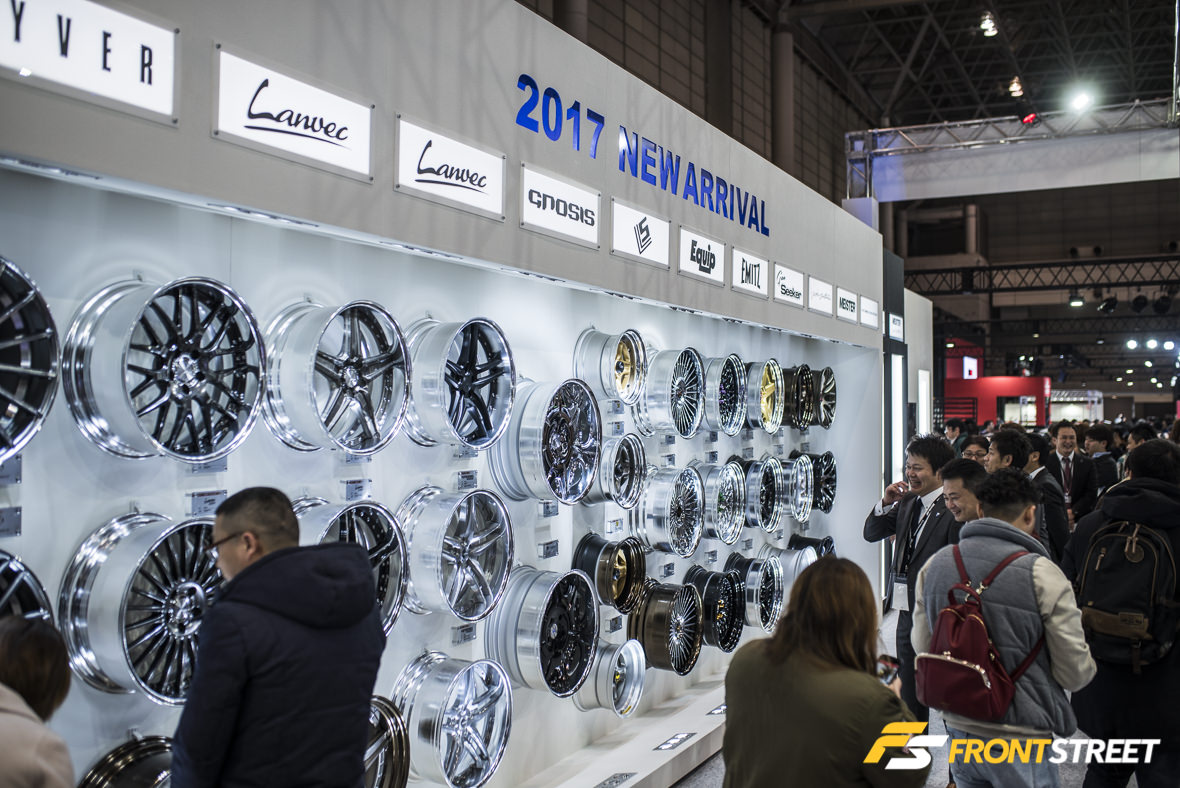
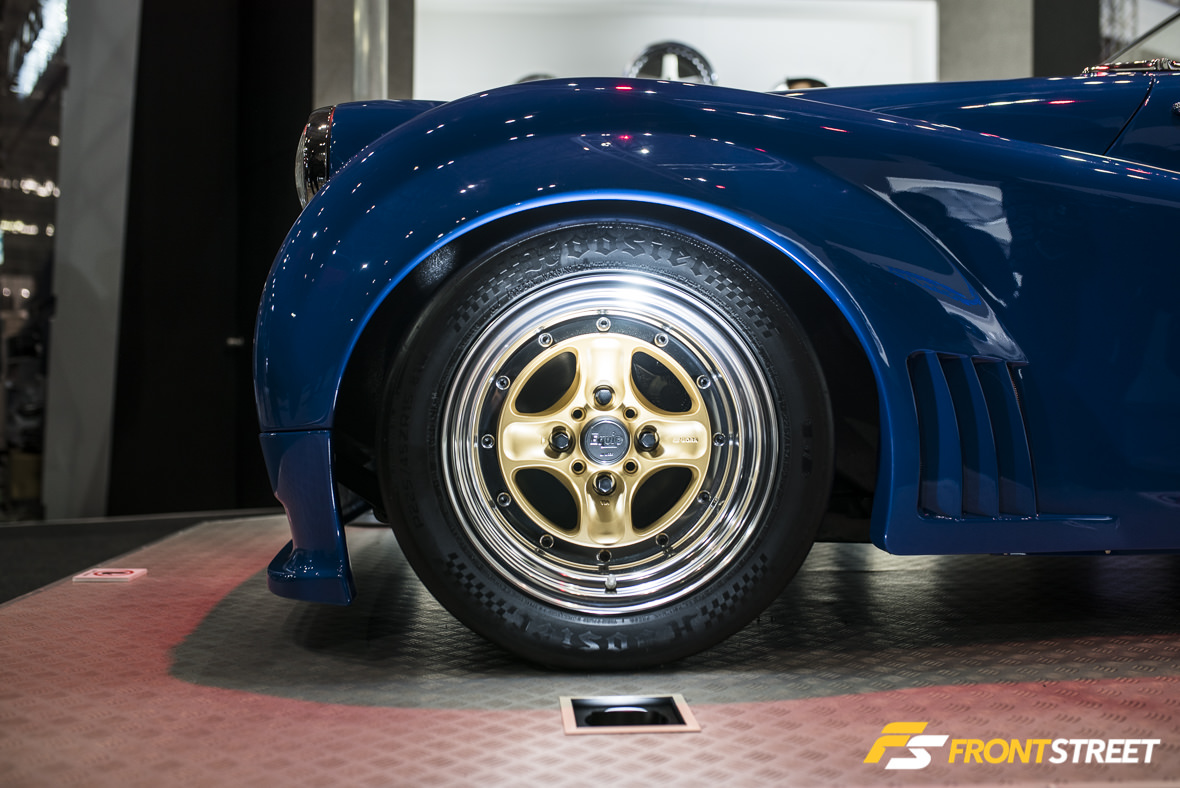
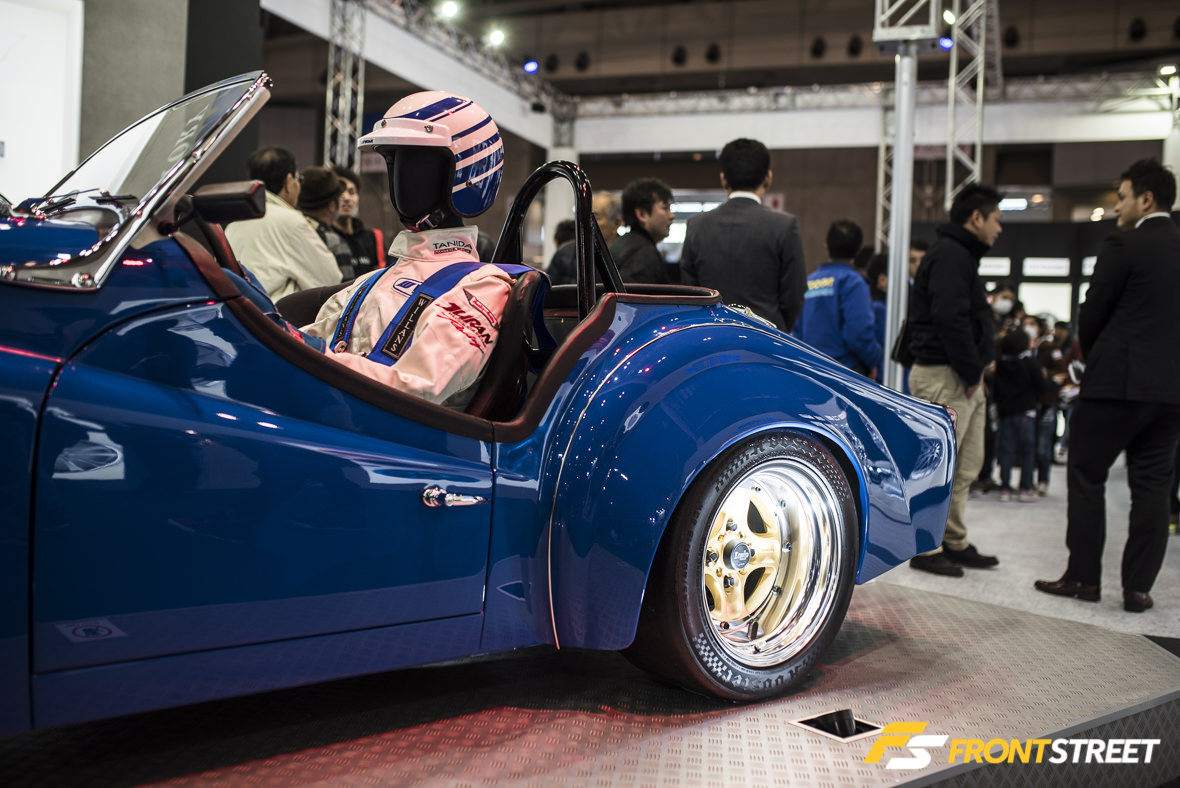
Well-known Japanese wheel company Work Wheels and their wheel wall provided an opportunity to bask in their new models, as the all-new designs were dispersed along the display. We were especially fond of these new Work Equip 40 wheels, which pair nostalgic looks with modern technology on this Triumph demo car.
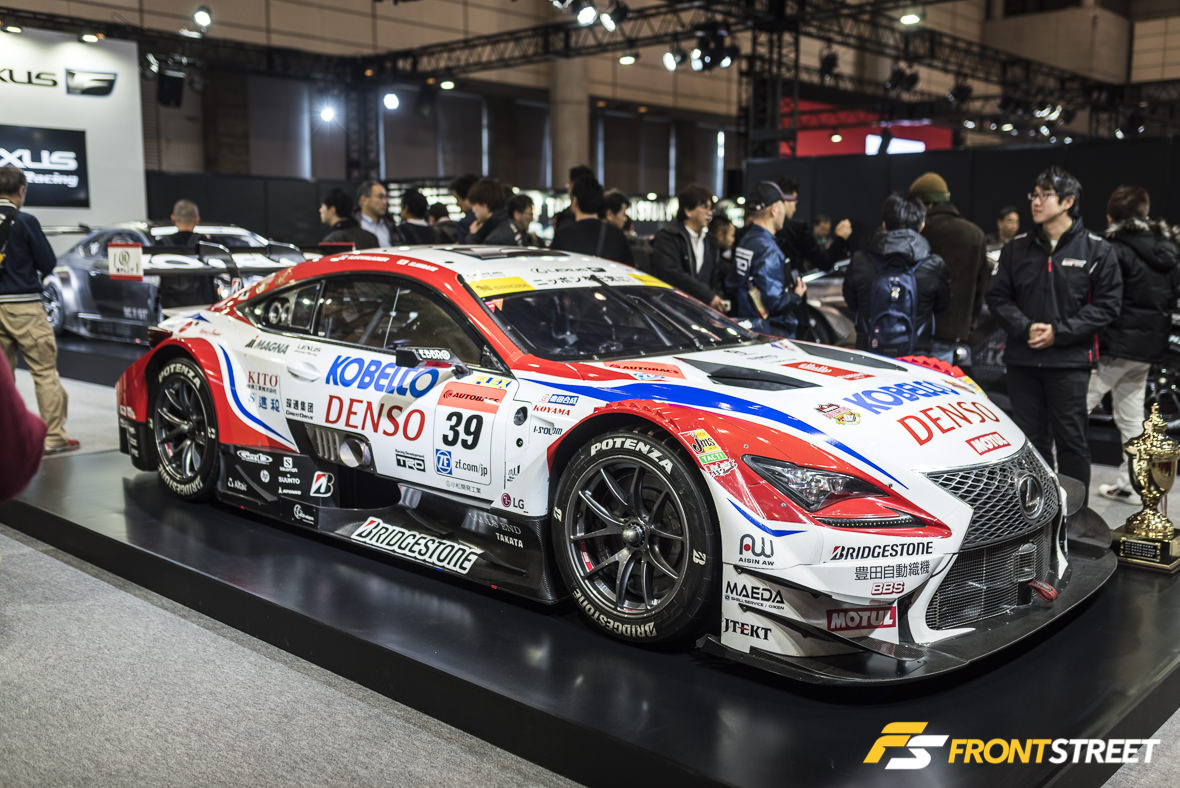
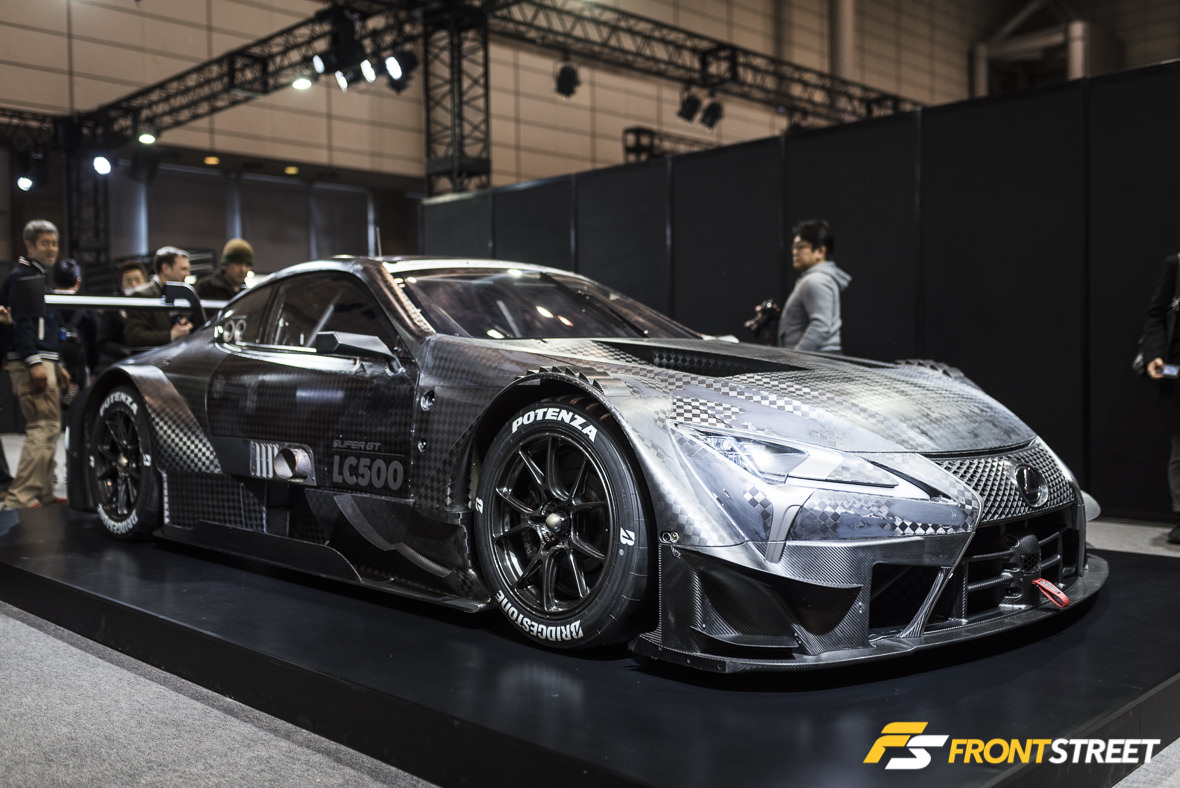
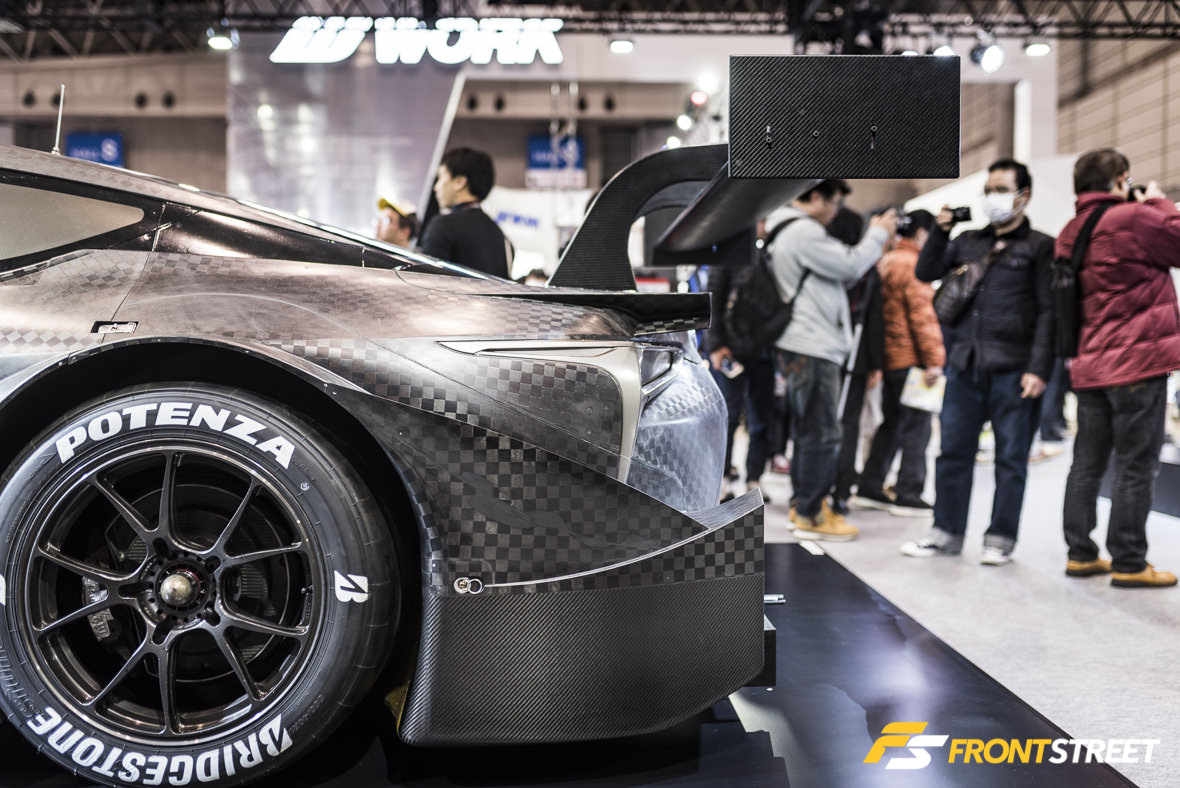
One of the highest forms of domestic motorsport in Japan and its surrounding countries is the Super GT Championship. With a new season starting in April, most of the manufacturers involved in the series use Tokyo Auto Salon to showcase their new car design, usually sans their new livery, which leaves us all drooling over the curvaceous panels of dry carbon fiber. Lexus/Toyota/Gazoo Racing brought out their 2016 GT500 class champion the Denso Kobelco Sard RC F, but they also brought their new contender for the same class – the LC 500. I could stare at the Spread Tow Fabric (STF) carbon weave all day long… but we must continue.
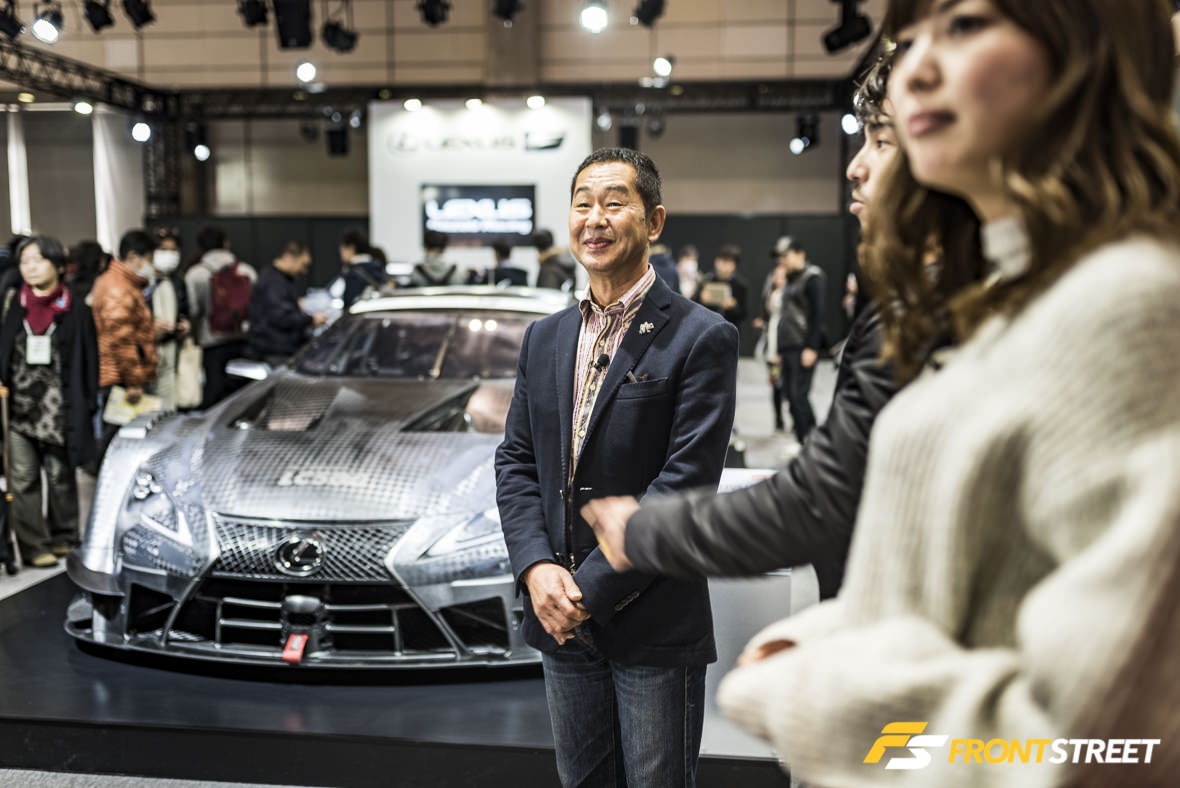
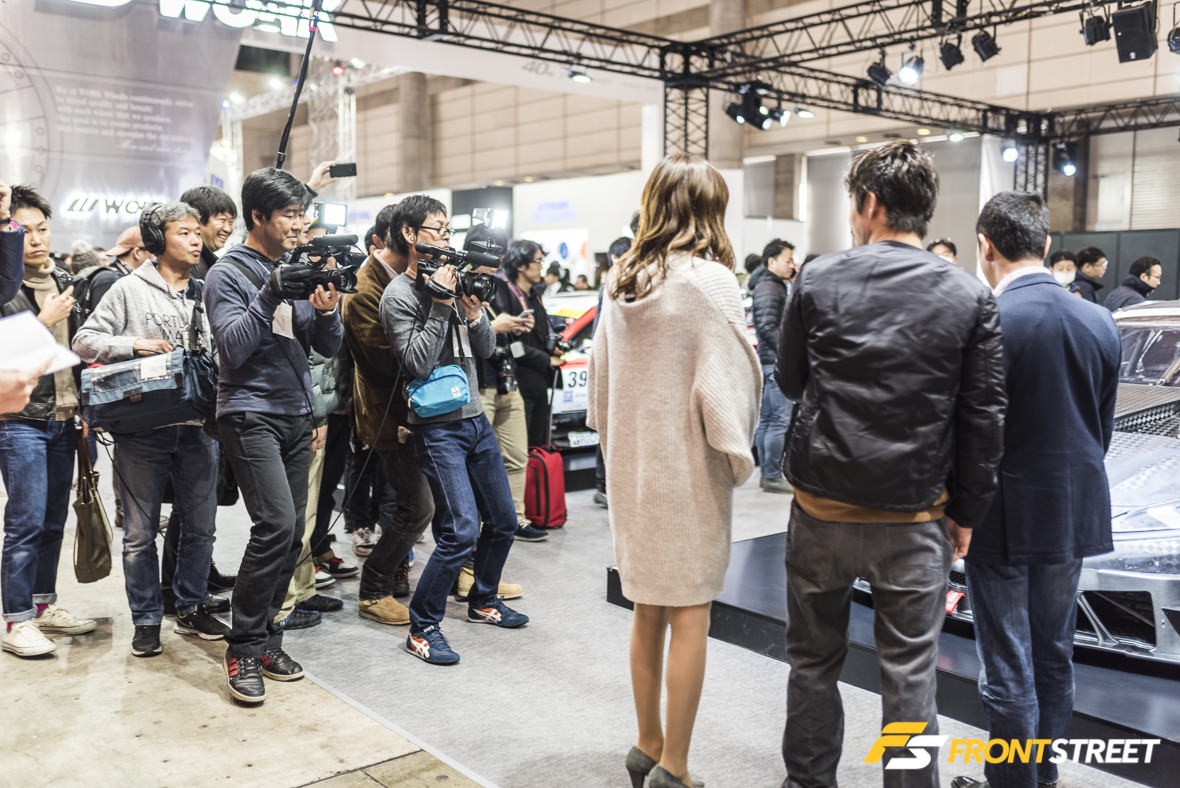
A long-time fan of the Toyota AE86 Corolla, former JGTC pilot, and Japanese automotive celebrity Keiichi Tsuchiya was even spotted hanging around the new chassis – and not just by Phan.
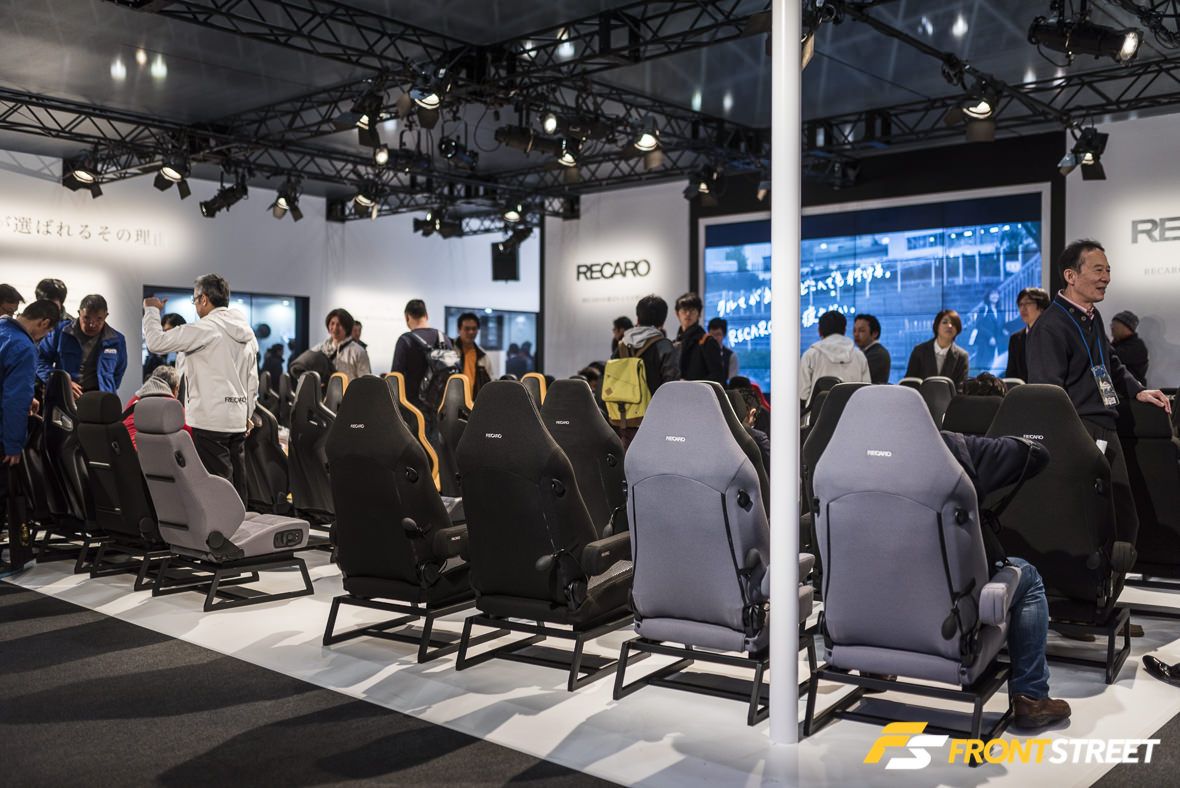
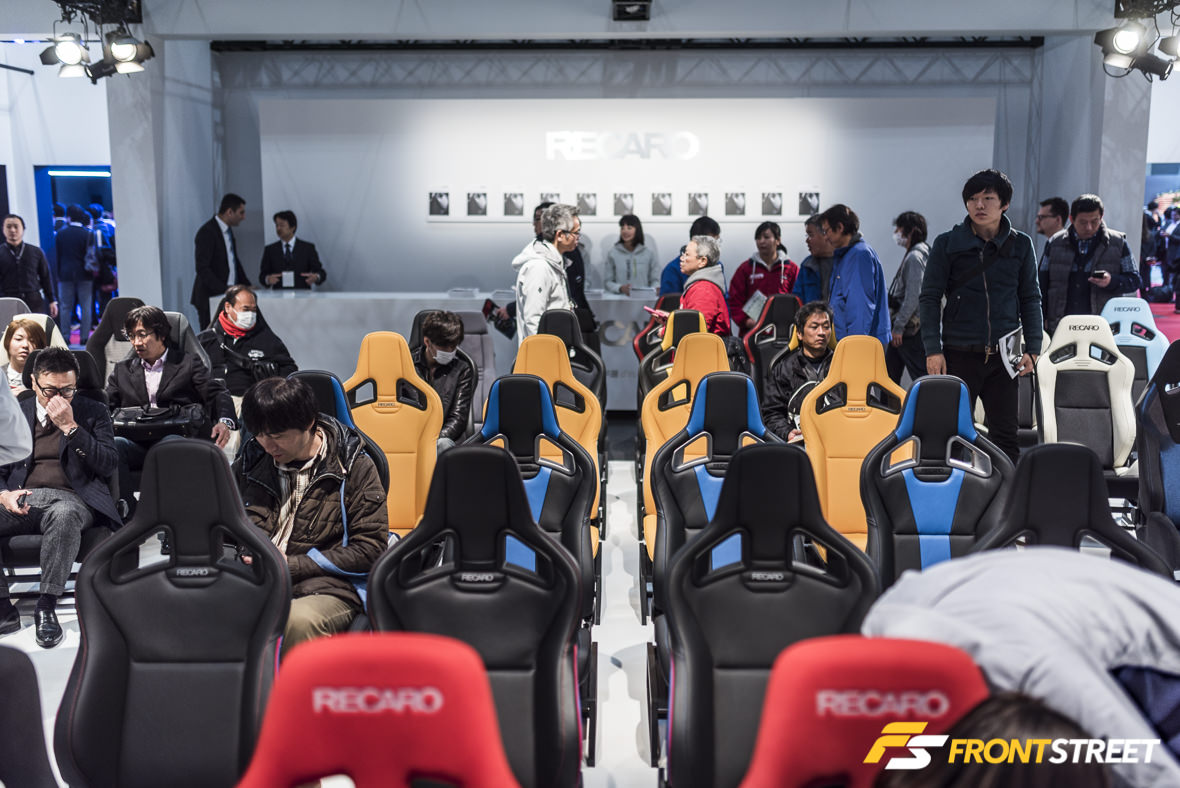
Recaro Japan created its own booth by arranging various seating options into rows. This created a rest area, where guests could not only sit in their favorite seat model, but also enjoy the film playing on the projector screen at the front. I wonder what a movie theater filled with Recaro seating would look like?
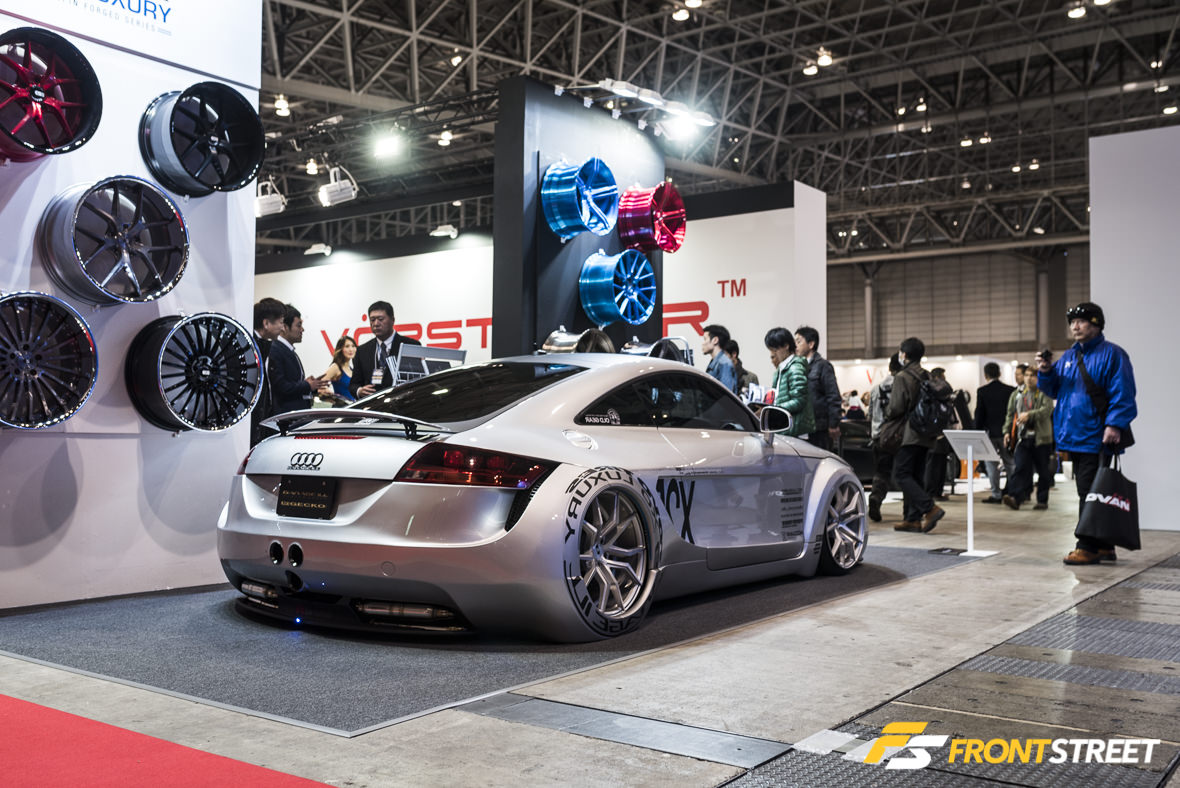

In a land where outlandish is the norm, a car with futuristic design elements may be accepted, but we couldn’t stop looking at this crazy Audi TT with full surrounding wheel wells in the XO Luxury booth.
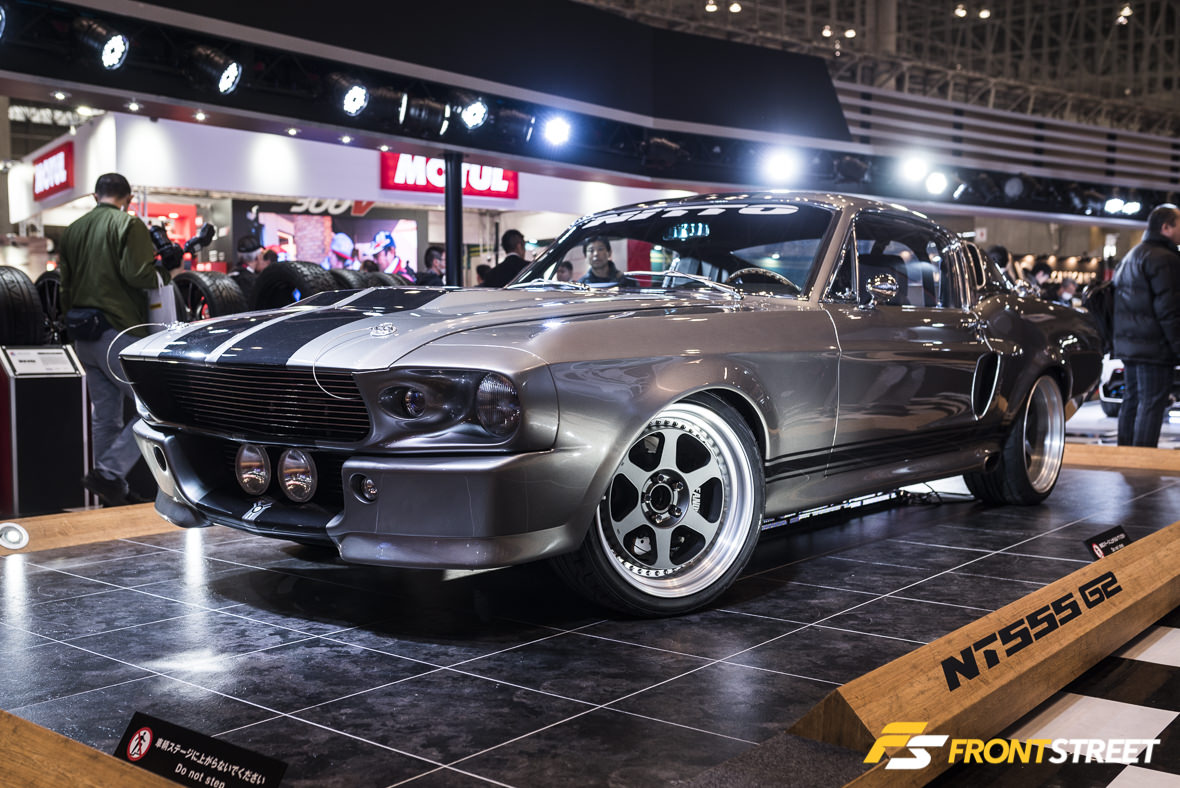
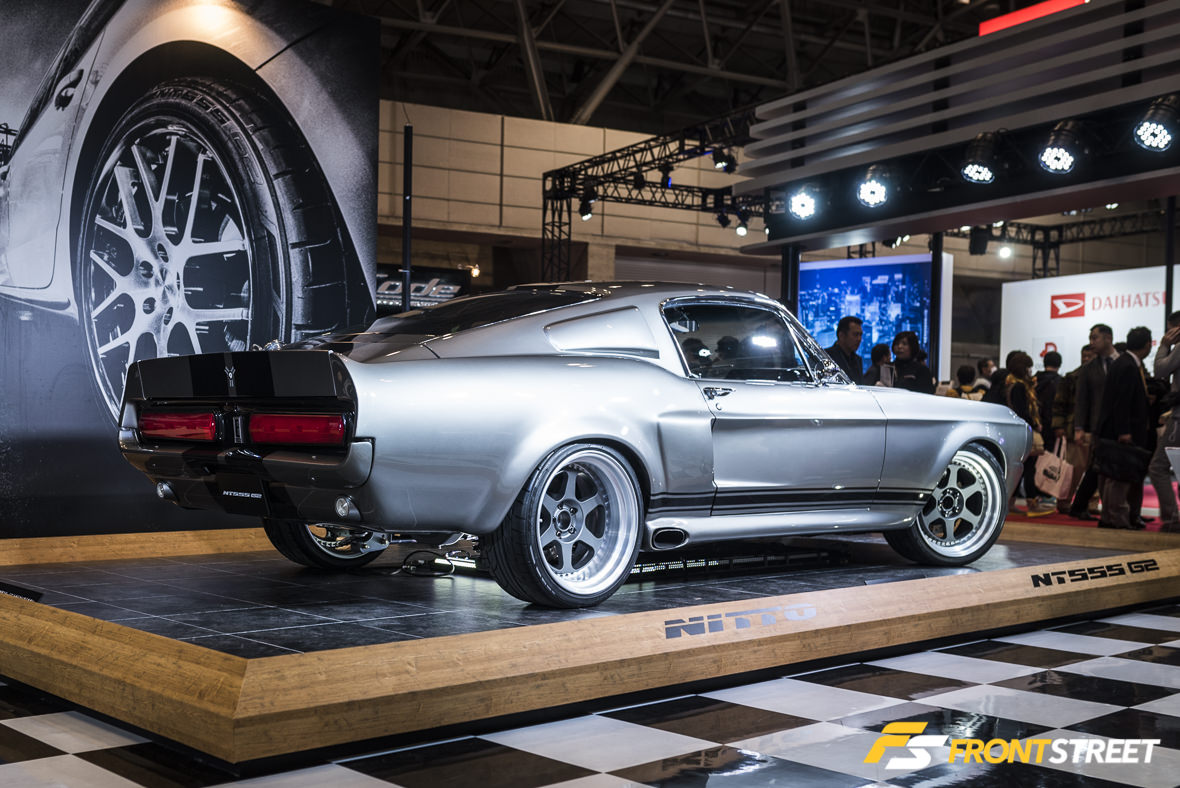
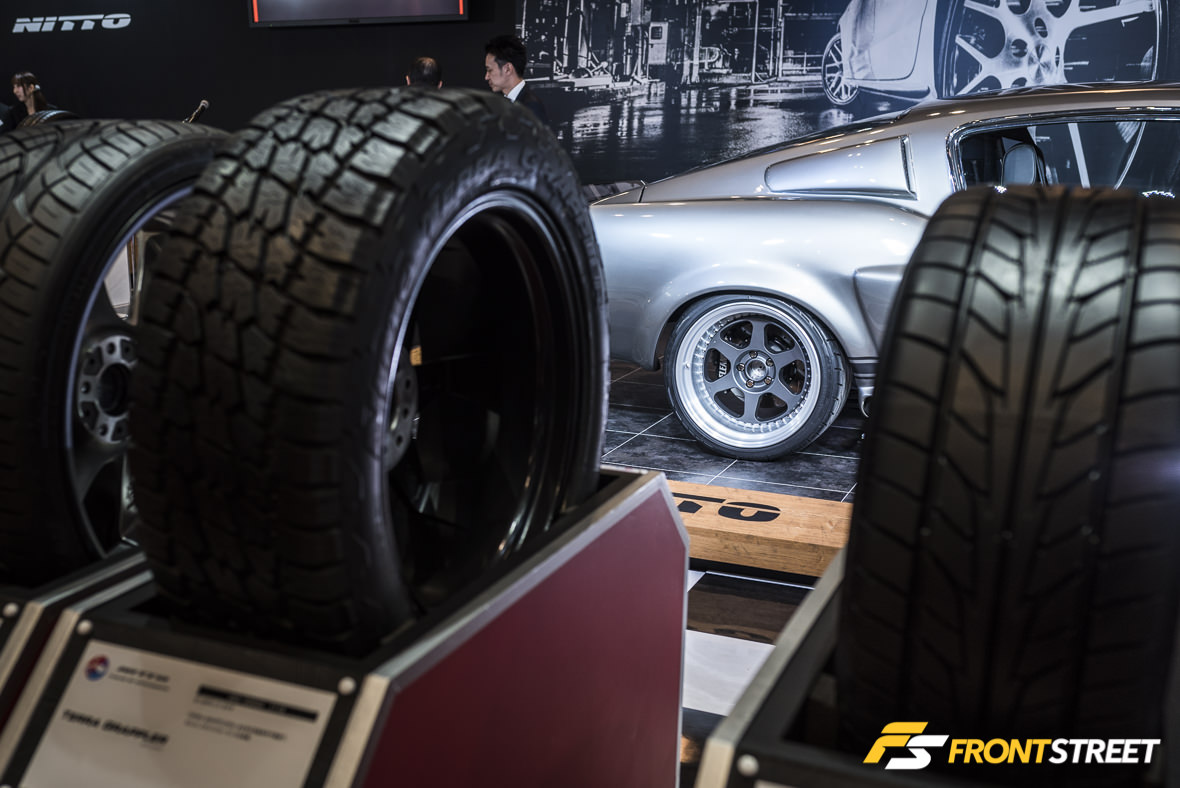
Combining vintage American muscle with Japanese flavor might have been a bit overexaggerated in the Fast and the Furious franchise, but Nitto Tires created it in real-life for this year’s event. Donning Work Wheels’ new Meister L1 design wrapped in Nitto’s new NT555 G2 rubber recipe, this Mustang is sure to appeal to just about anyone.
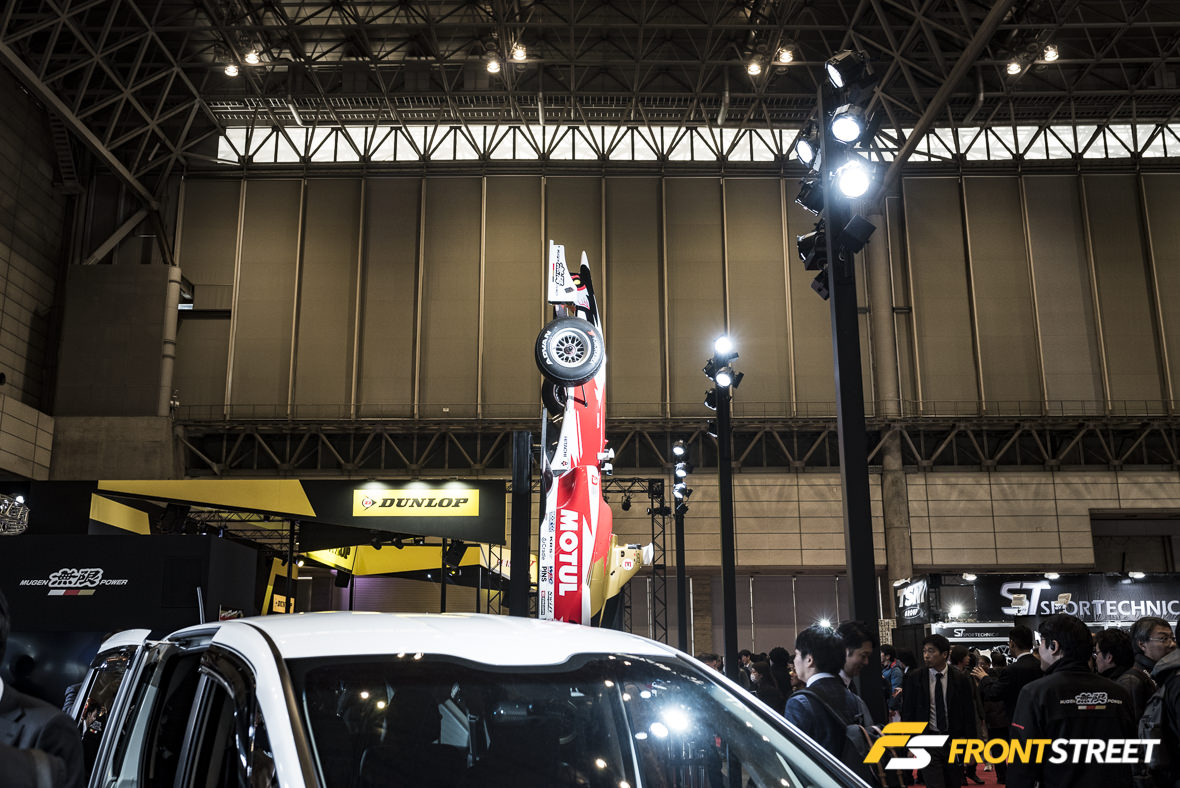
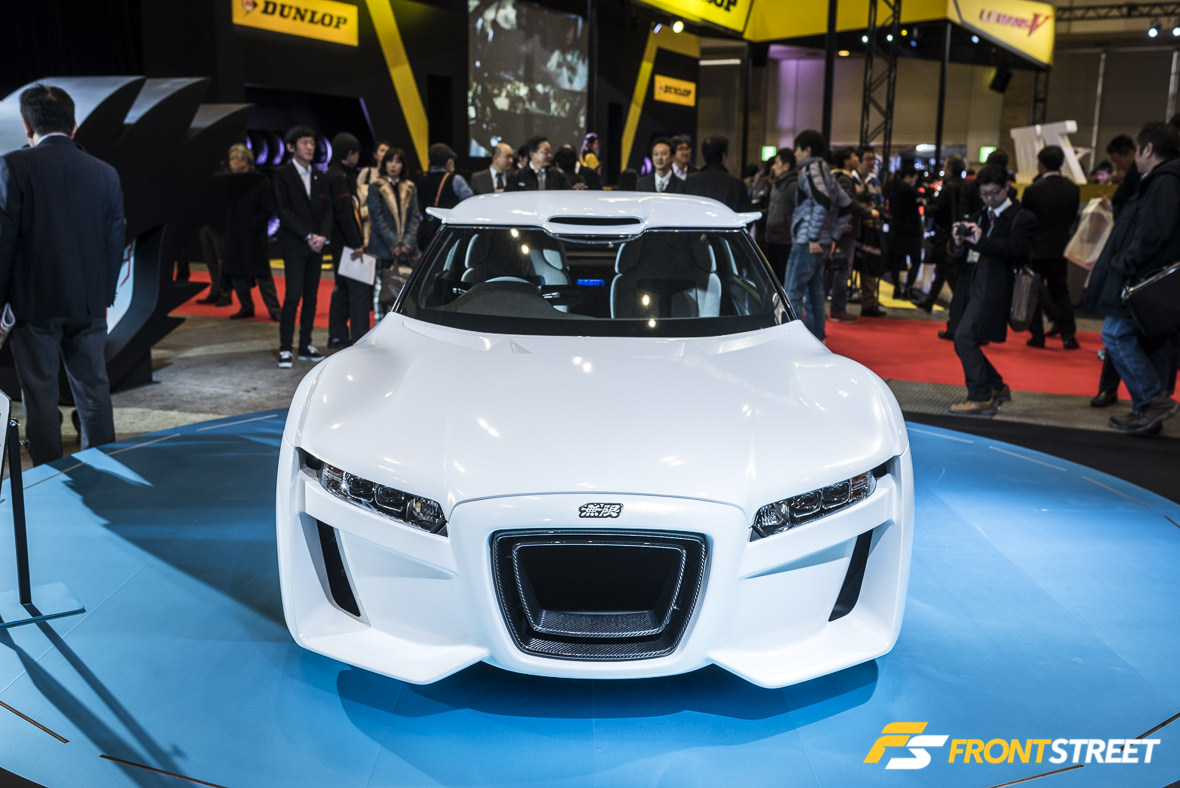
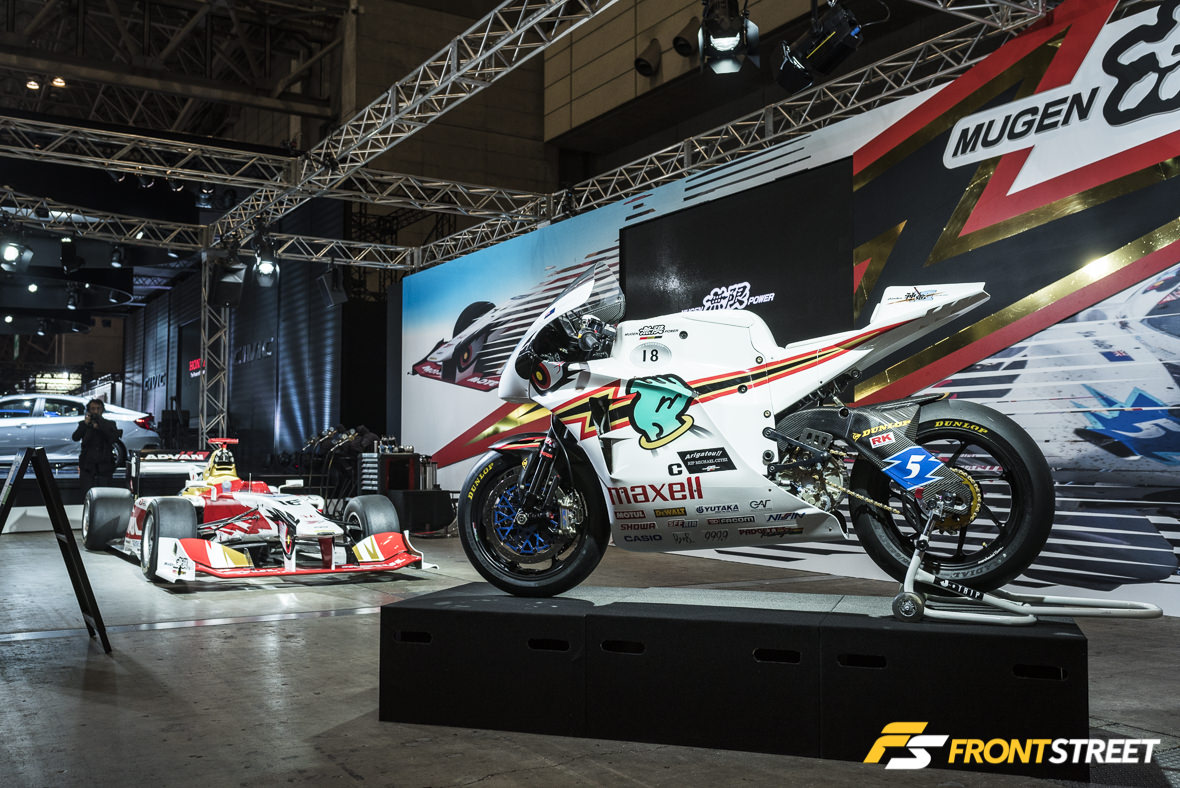
Hanging their Super Formula racecar amidst other racing vehicles, the iconic Mugen Power’s booth attracted the masses. Guests could behold the sleek lines of any number of unique vehicles – including Bruce Anstey’s Isle of Man TT Mugen Power motorcycle.
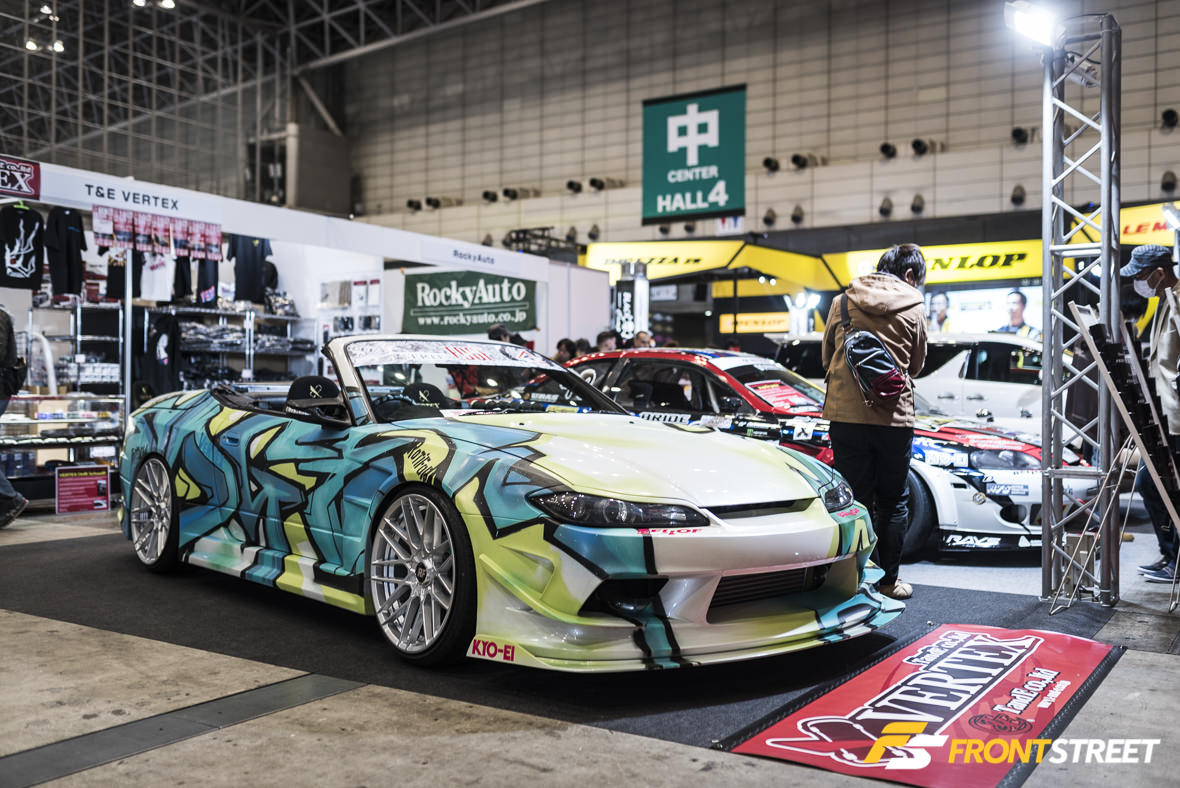
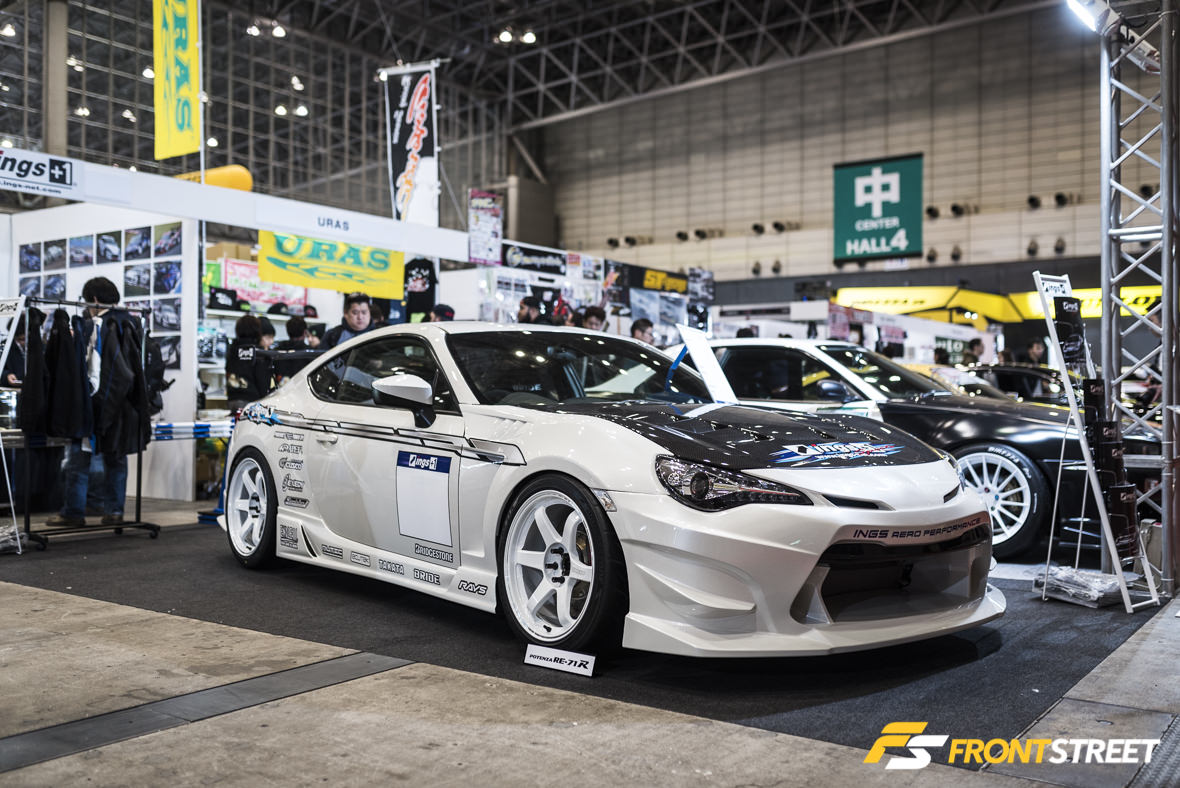
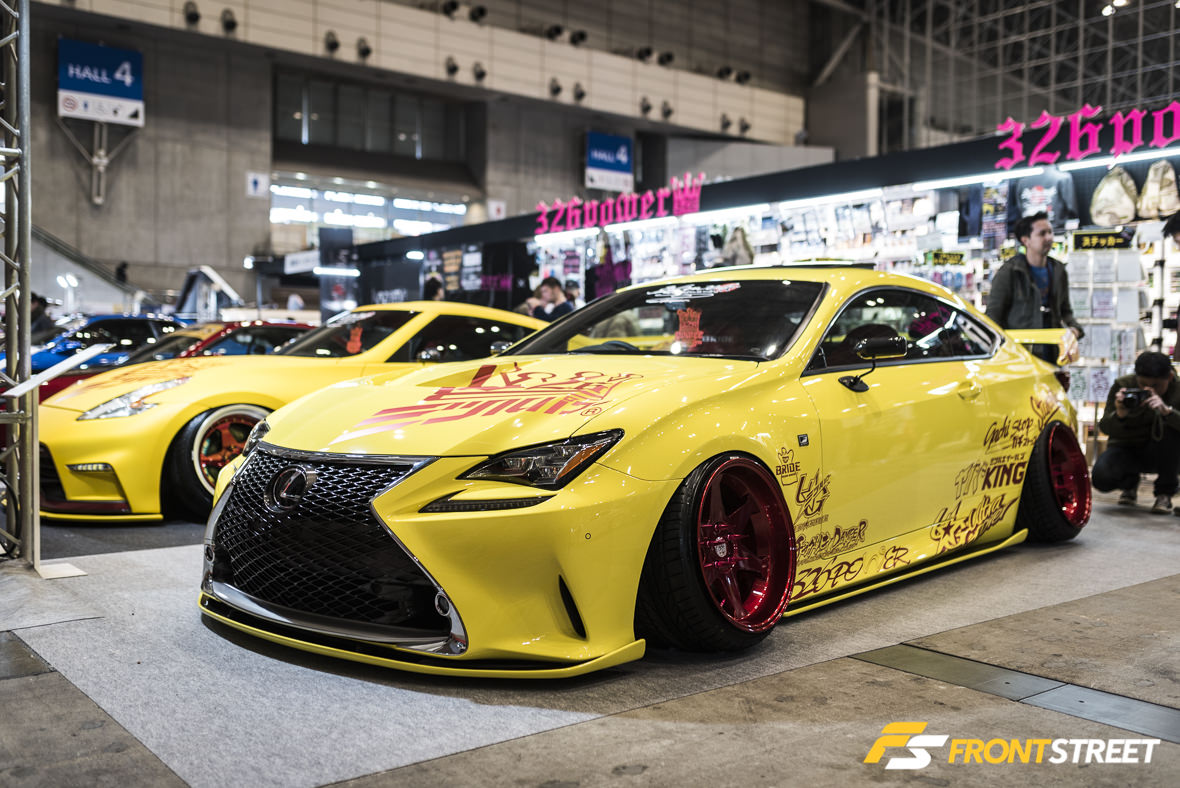
Japanese tuning powerhouses Vertex T&E, Ings +1, and 326 Power laid their newest products out in a lineup of extravagantly-painted cars that could not be missed.
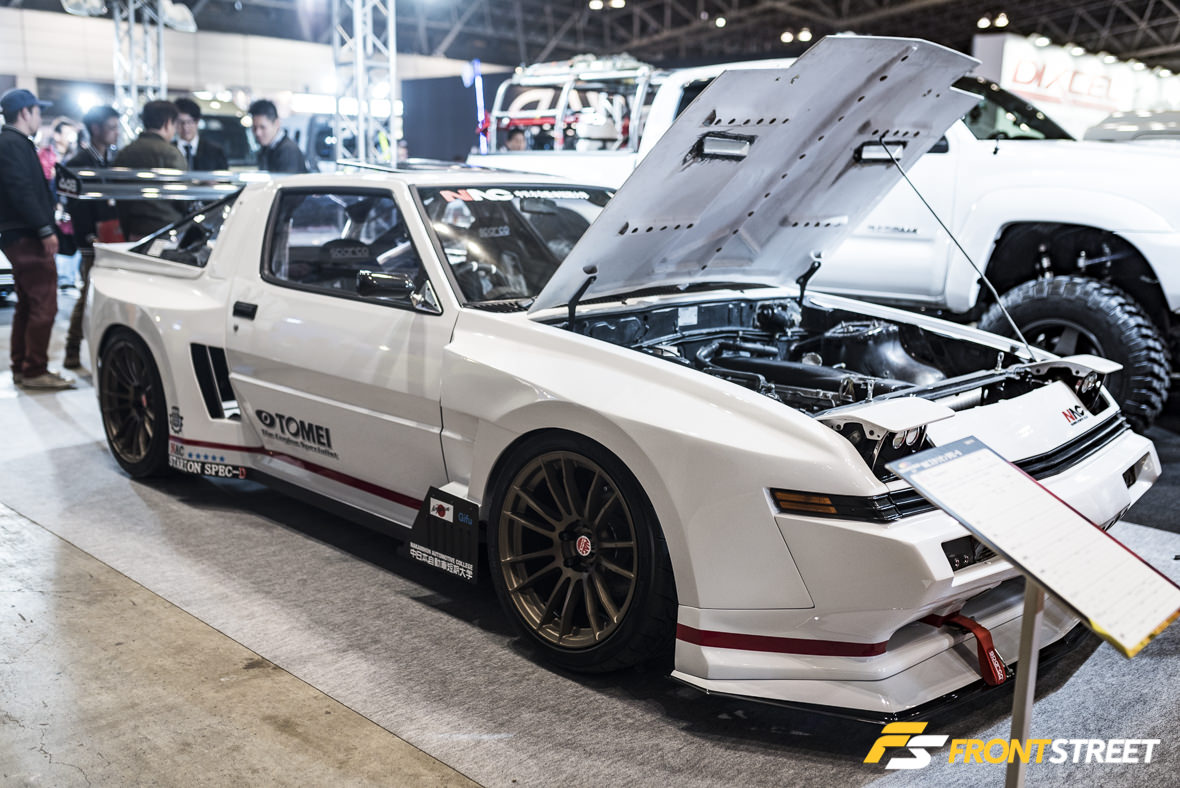
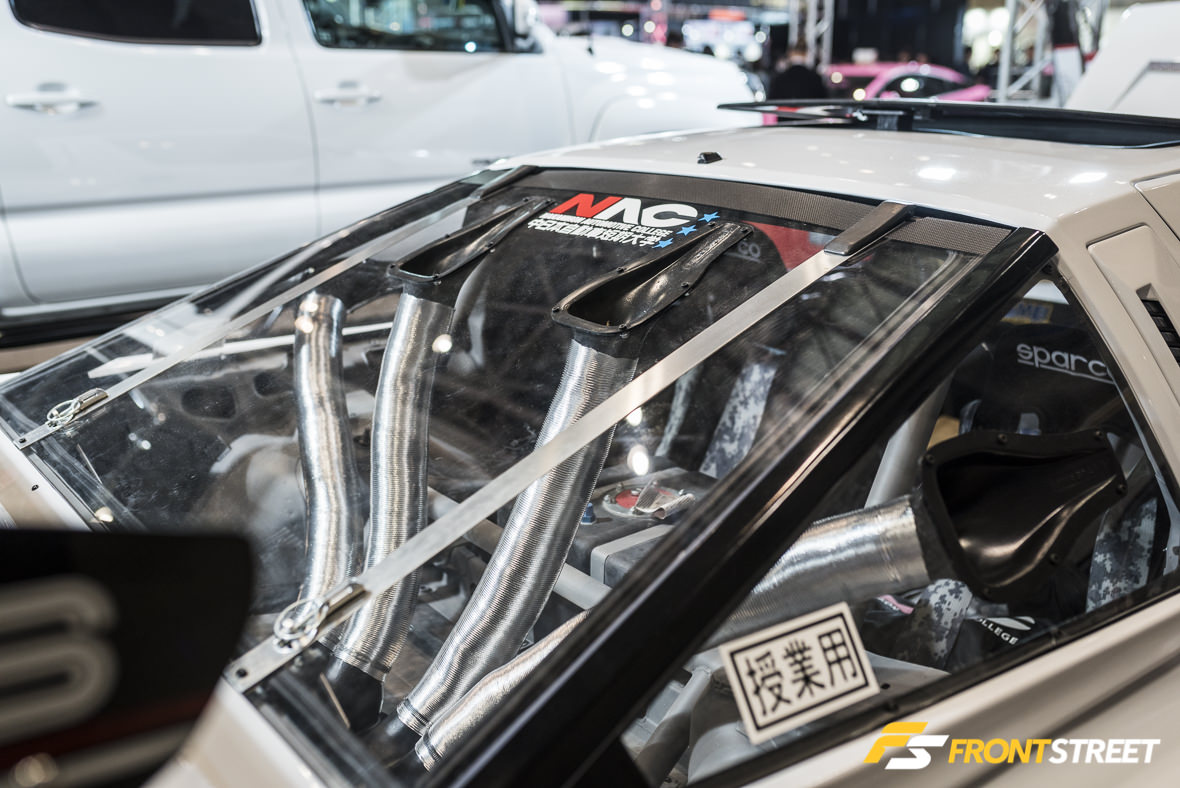
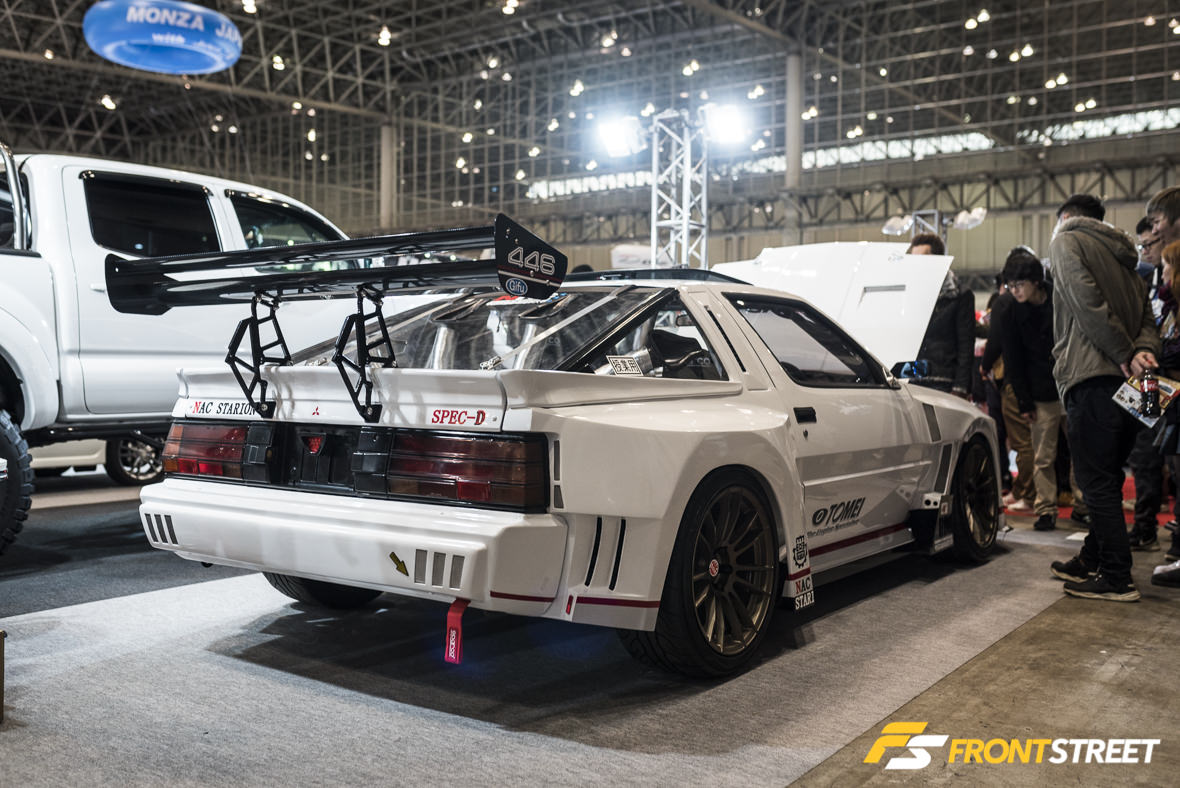
The Mitsubishi Starion may not be commonly modified anymore, but bringing one to Tokyo Auto Salon is sure to cause a stir, especially when the vehicle in question – like this example from Nakanihon Automotive College – is equipped with a Nissan RB26 engine and enough aero to keep the chassis firmly planted to the racetrack at high speed.
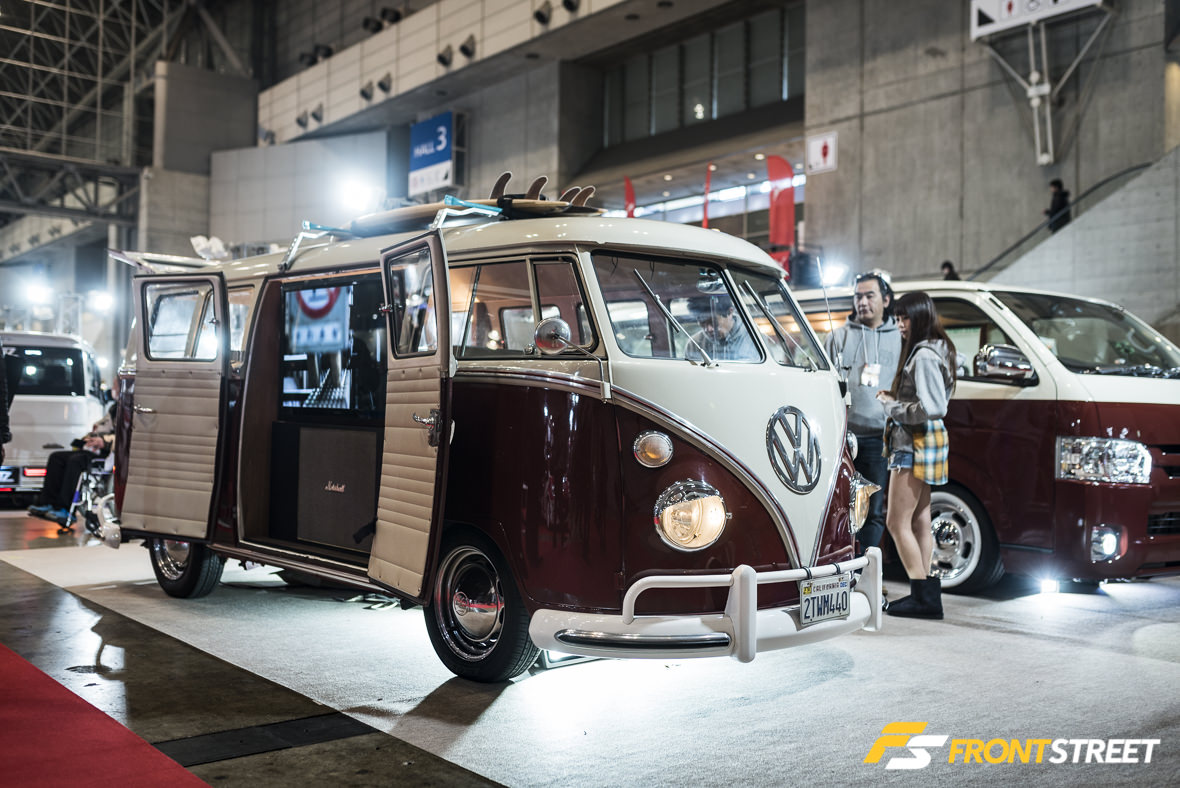
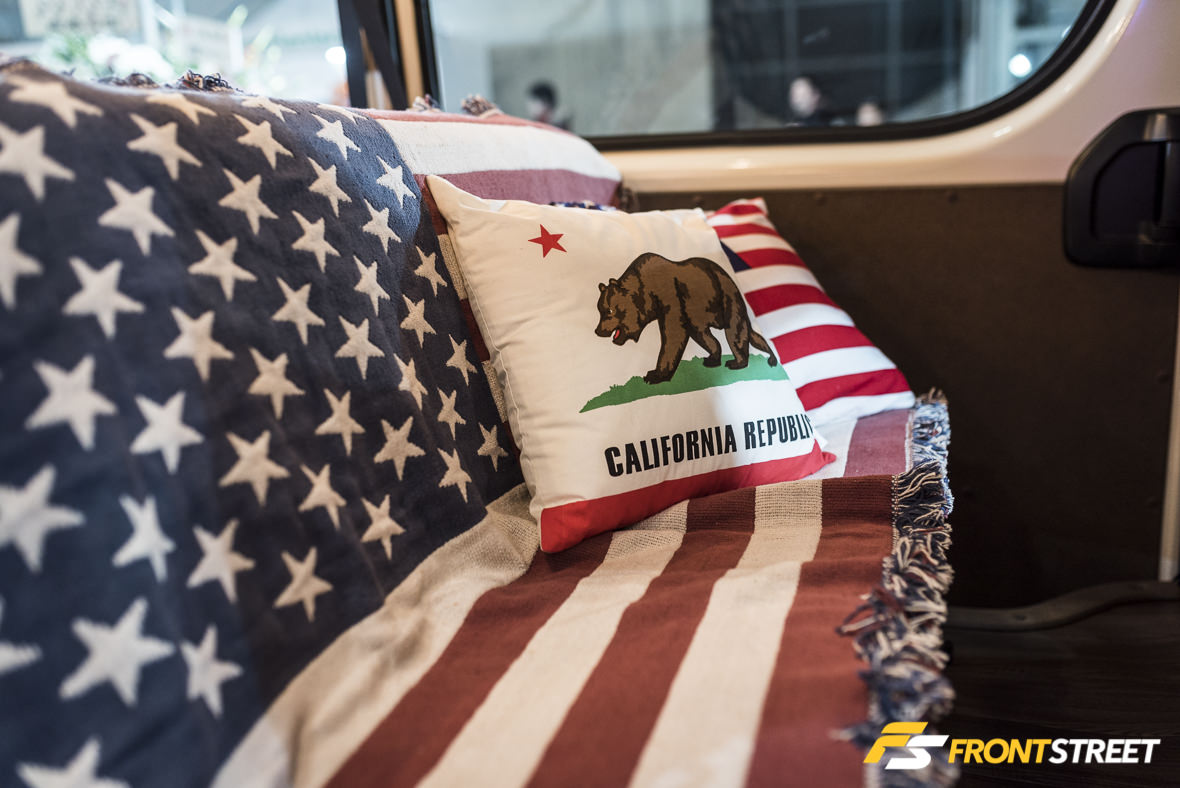
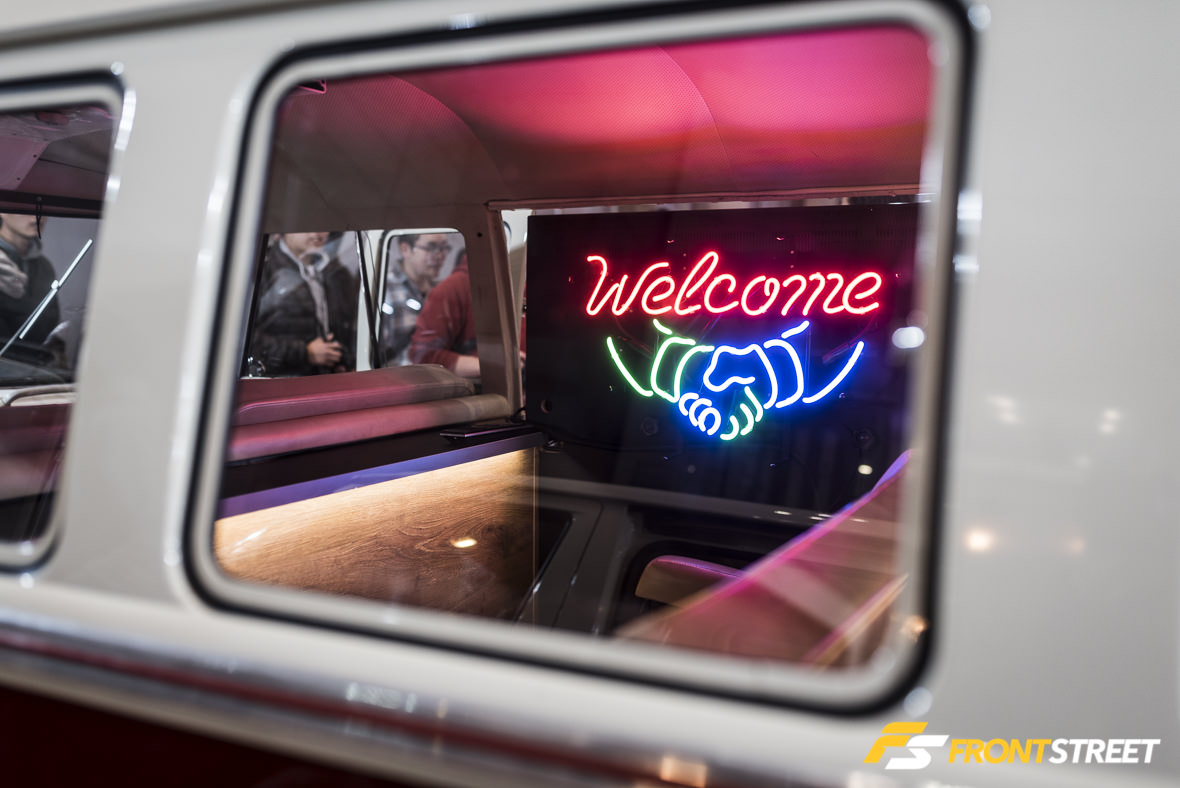
There’s also a sub-culture of Japanese enthusiasts who enjoy the American surfer motif, evidenced by this vintage Volkswagen bus, complete with California flag emblazoned pillows, American flags, and even California license plates.
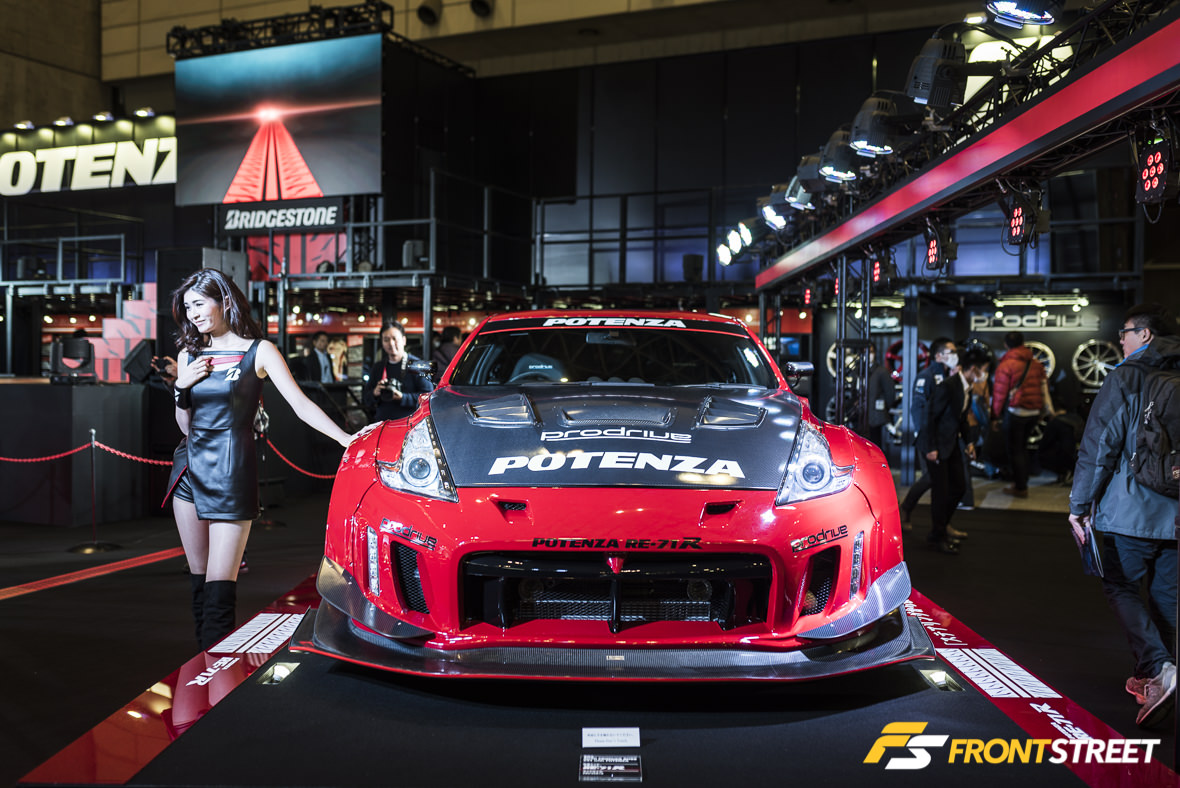
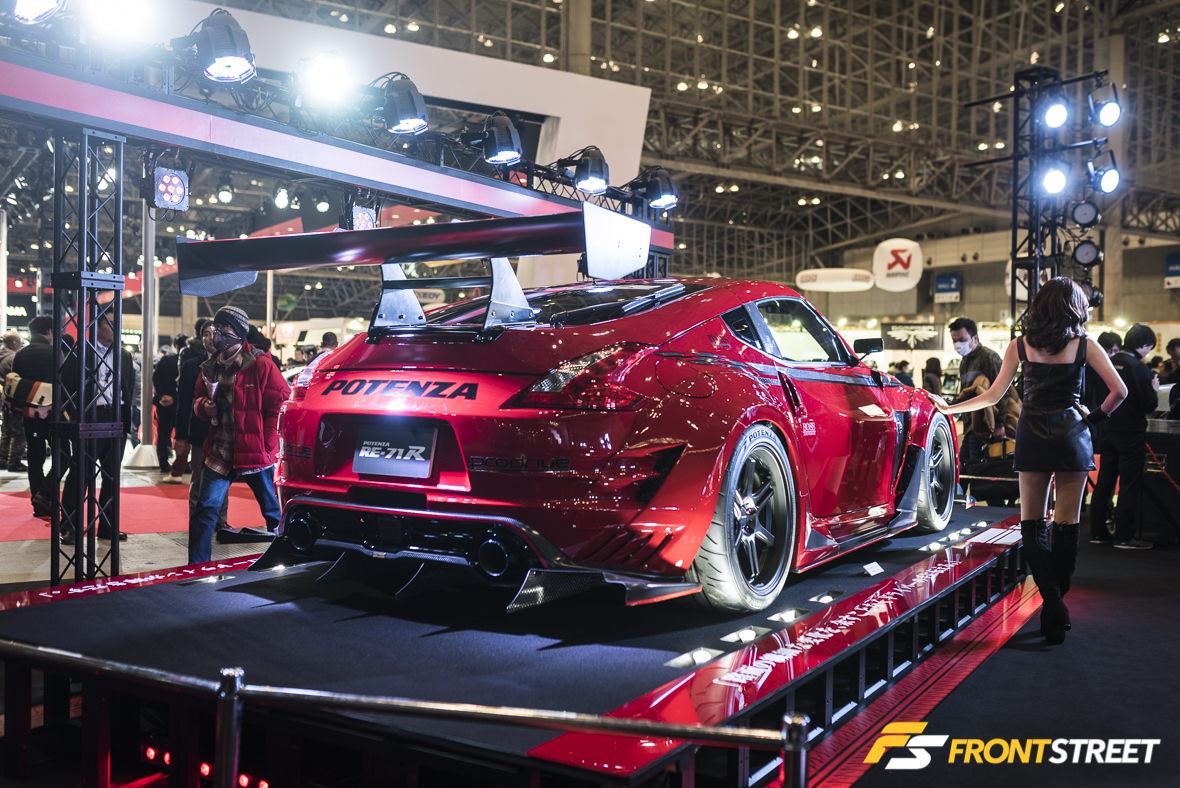
We had pictures of this Auto Produce Boss 370Z in our coverage of last year’s event, but its Bridgestone Potenza RW006 wheels weren’t wrapped in the new Potenza RE-71R rubber like they are now. They combine for a wonderful mixture of Bridgestone Potenza offerings.
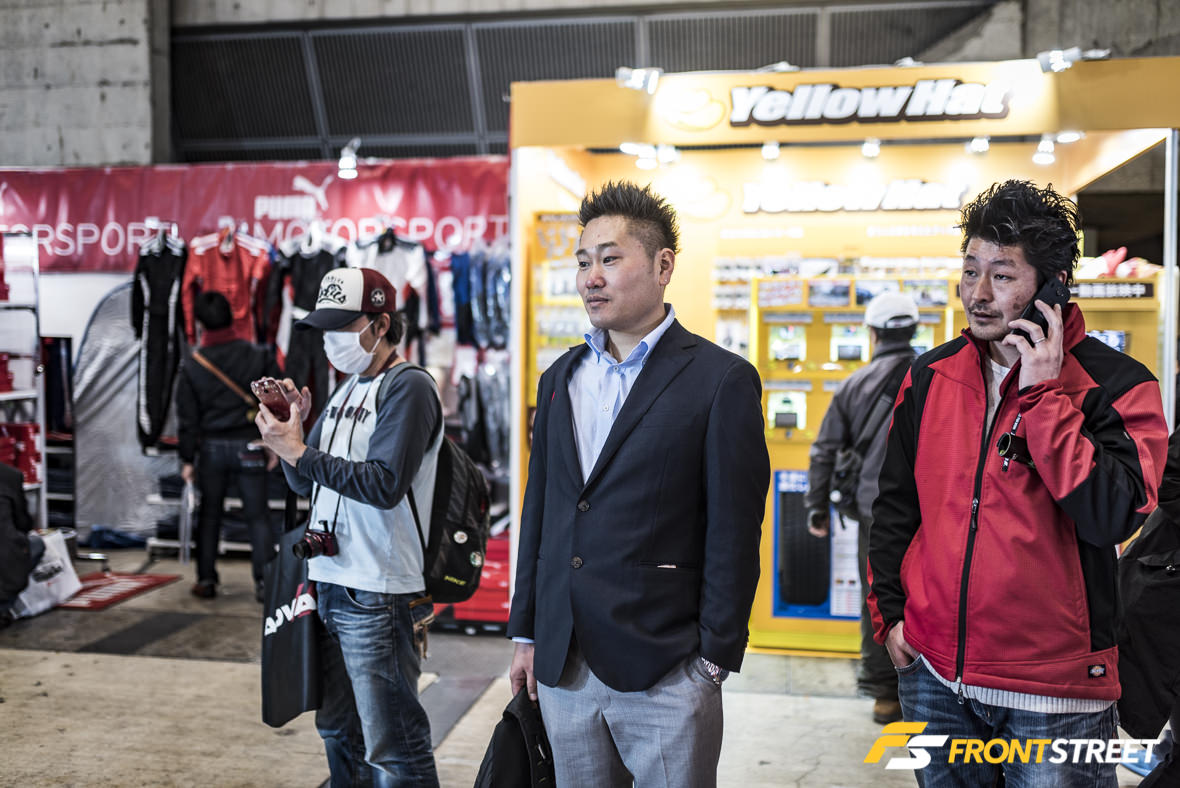
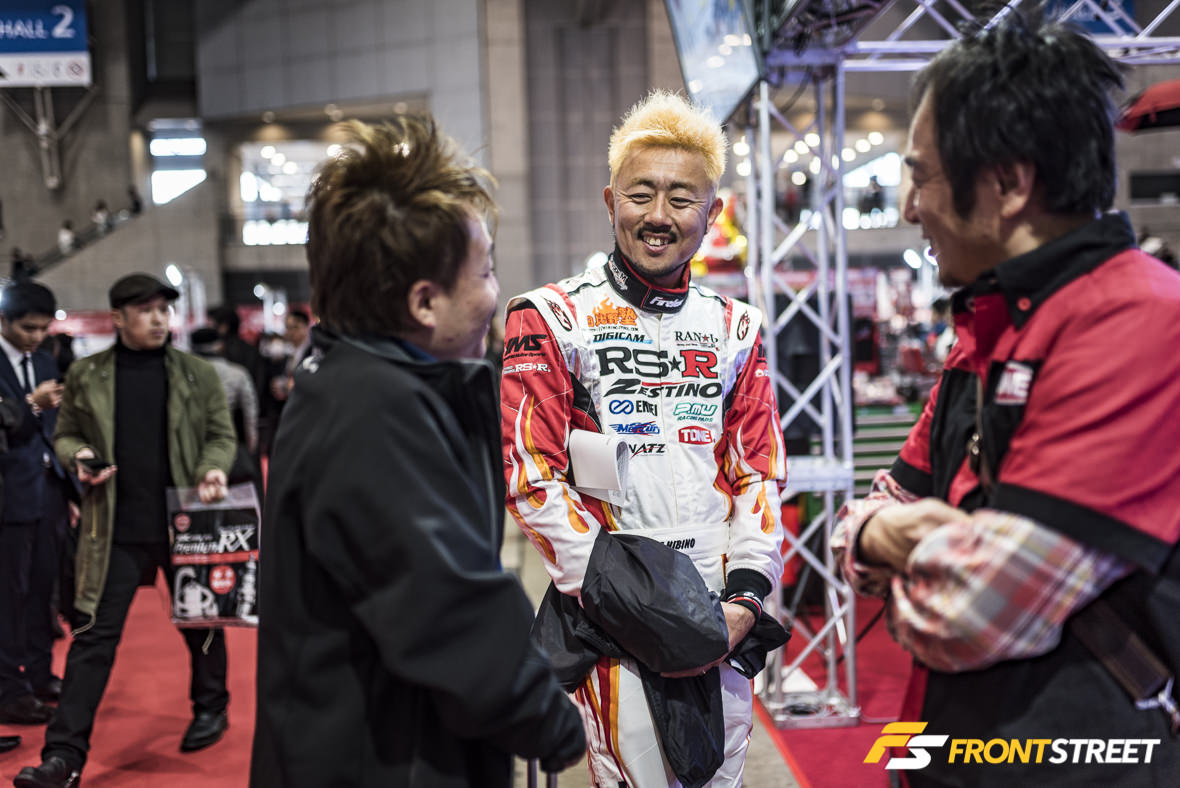
The Japanese automotive celebrity sightings continued as legendary professional drift drivers Daigo Saito and Tetsuya Hibino were found circulating the grounds.
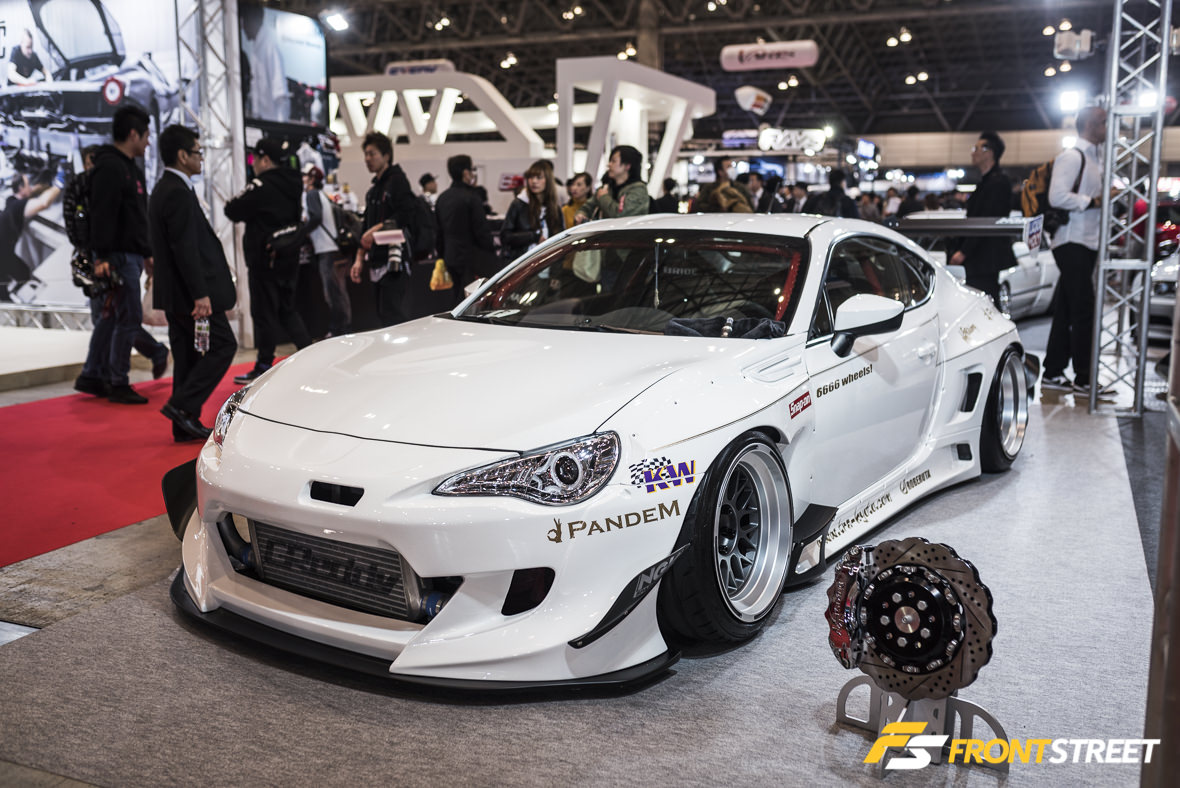
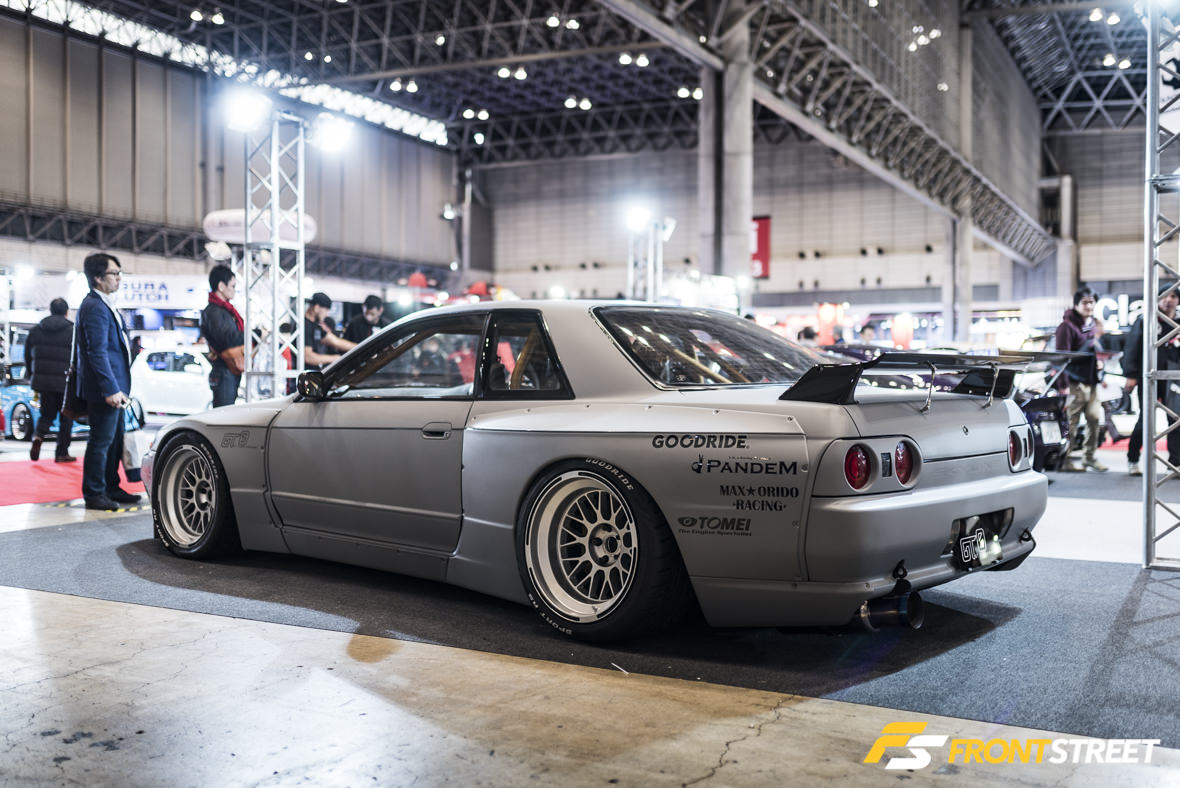
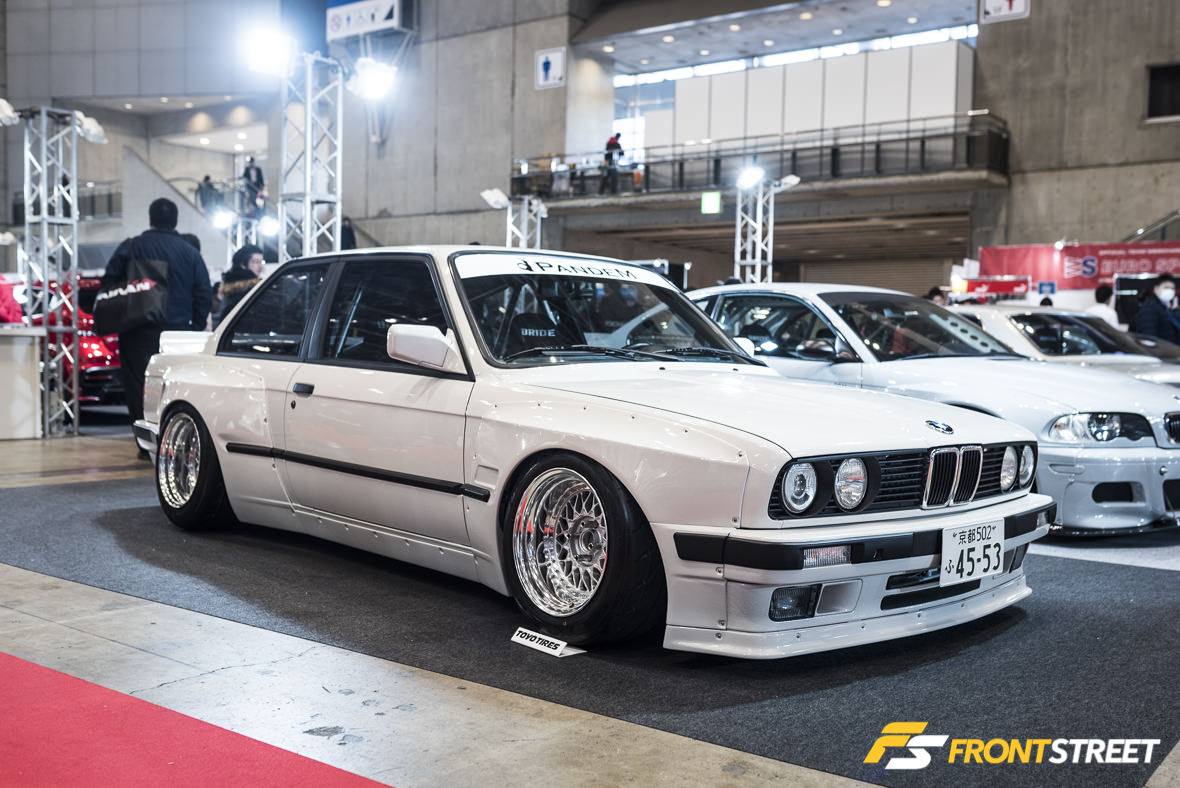
Exterior design juggernaut Kei Miura has been busy designing Pandem/Rocket Bunny widebody kits for an array of different chassis. The notable additions for this year include the Version 3 of the 86/BRZ kit, the (recently legal to import in the United States) R32 Skyline kit, and BMW E30 kit. These examples are the first of many to adorn the new body styling pieces produced by this influential aftermarket giant.
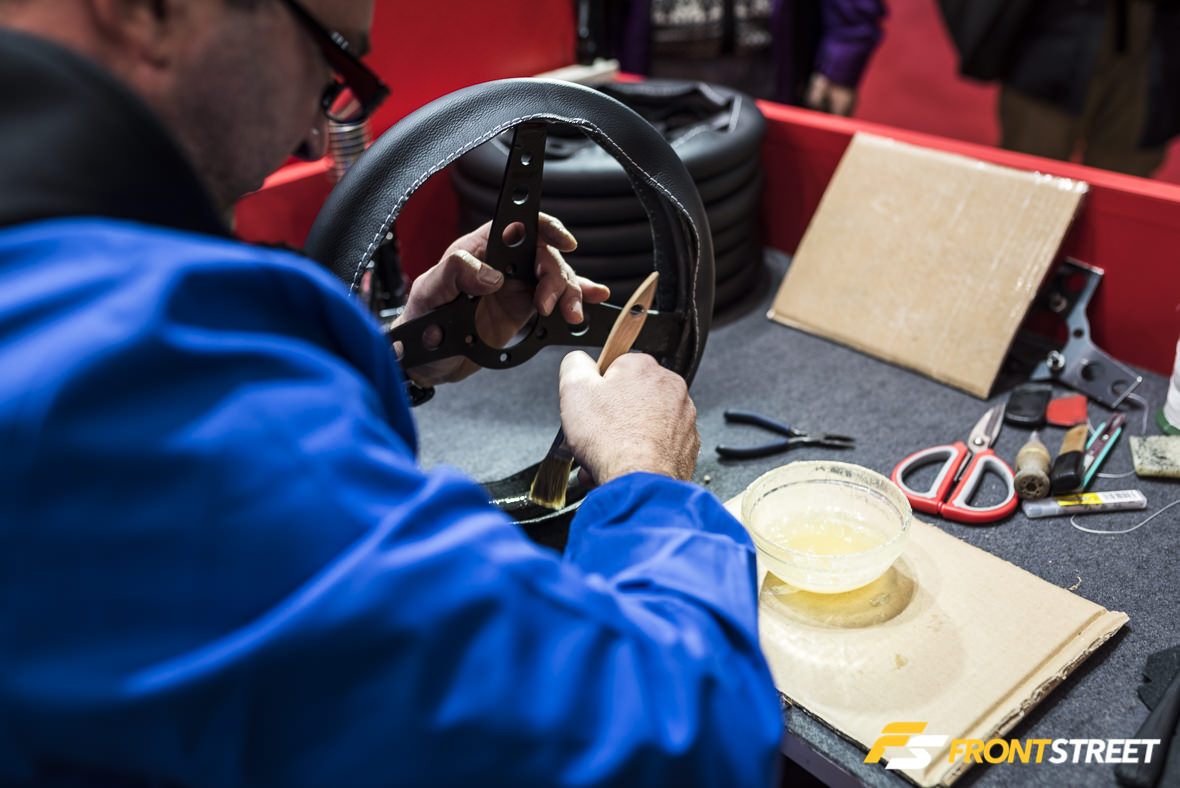
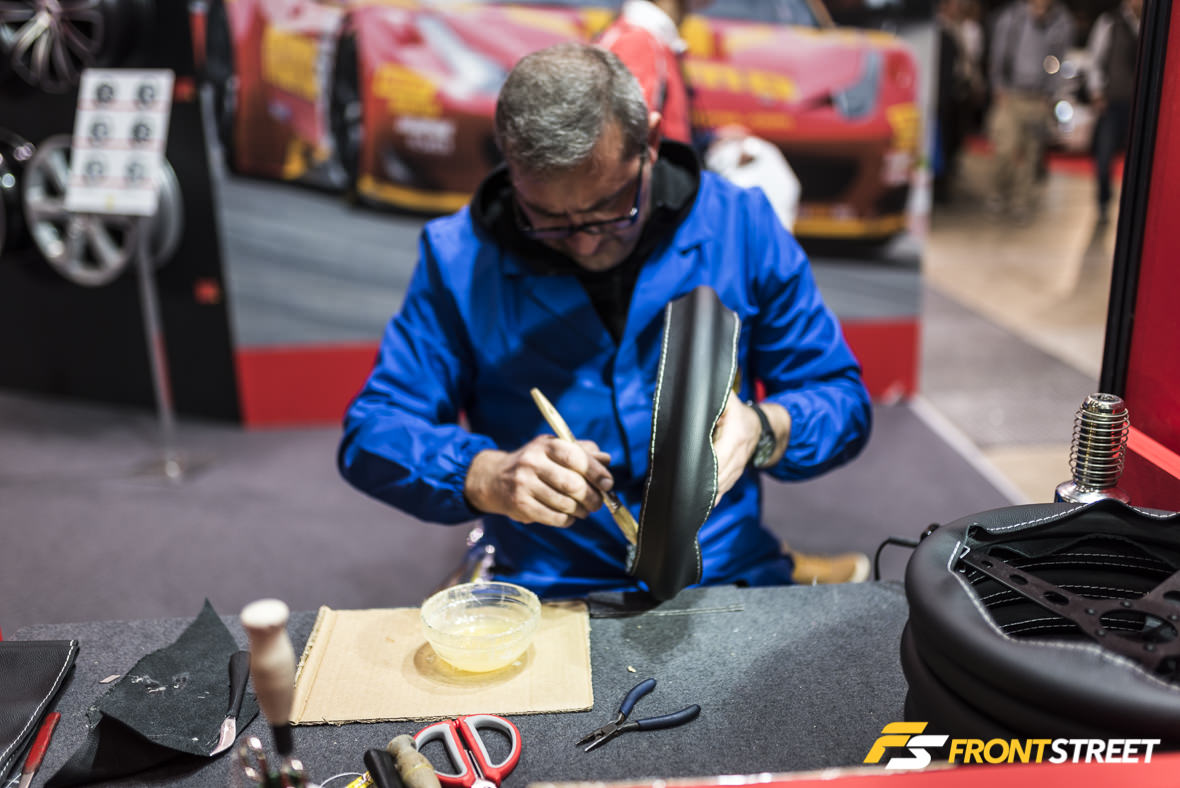
Momo, manufacturer of high-quality safety equipment, used fine Italian leather and a technician on site to demonstrate each of the steps involved with creating of one of their steering wheels.
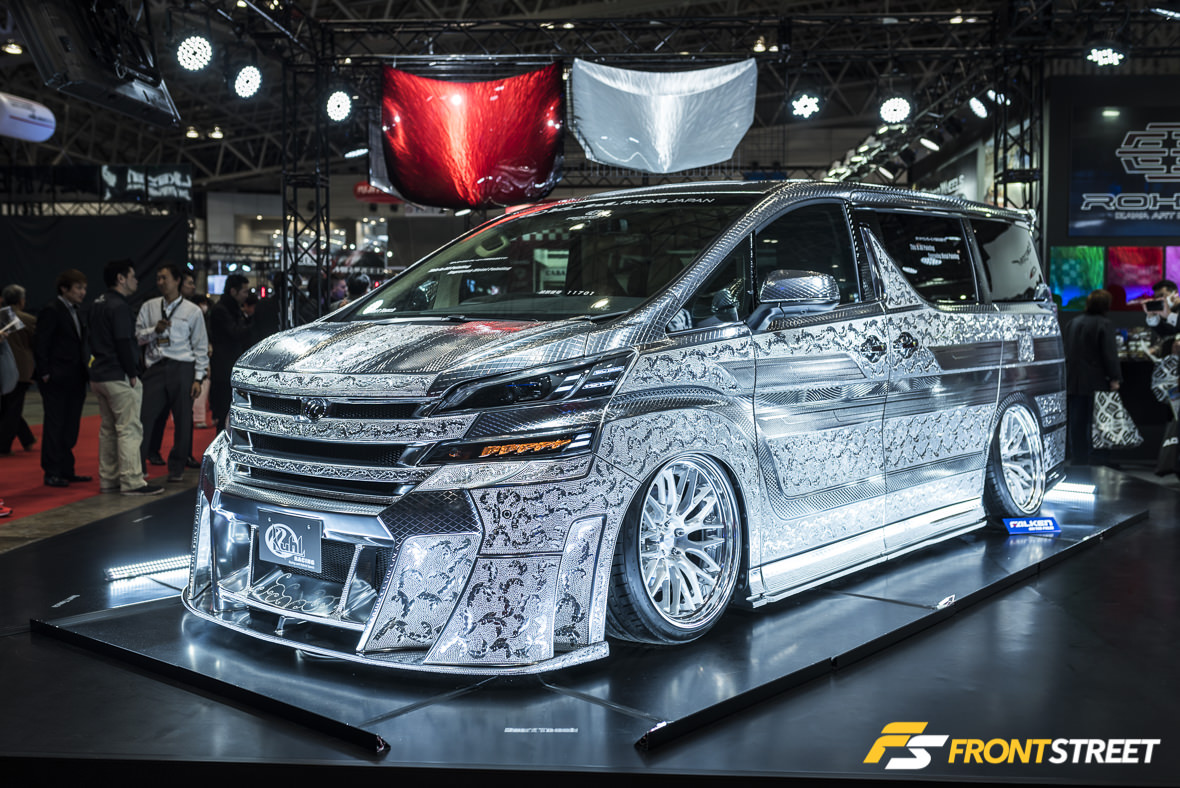
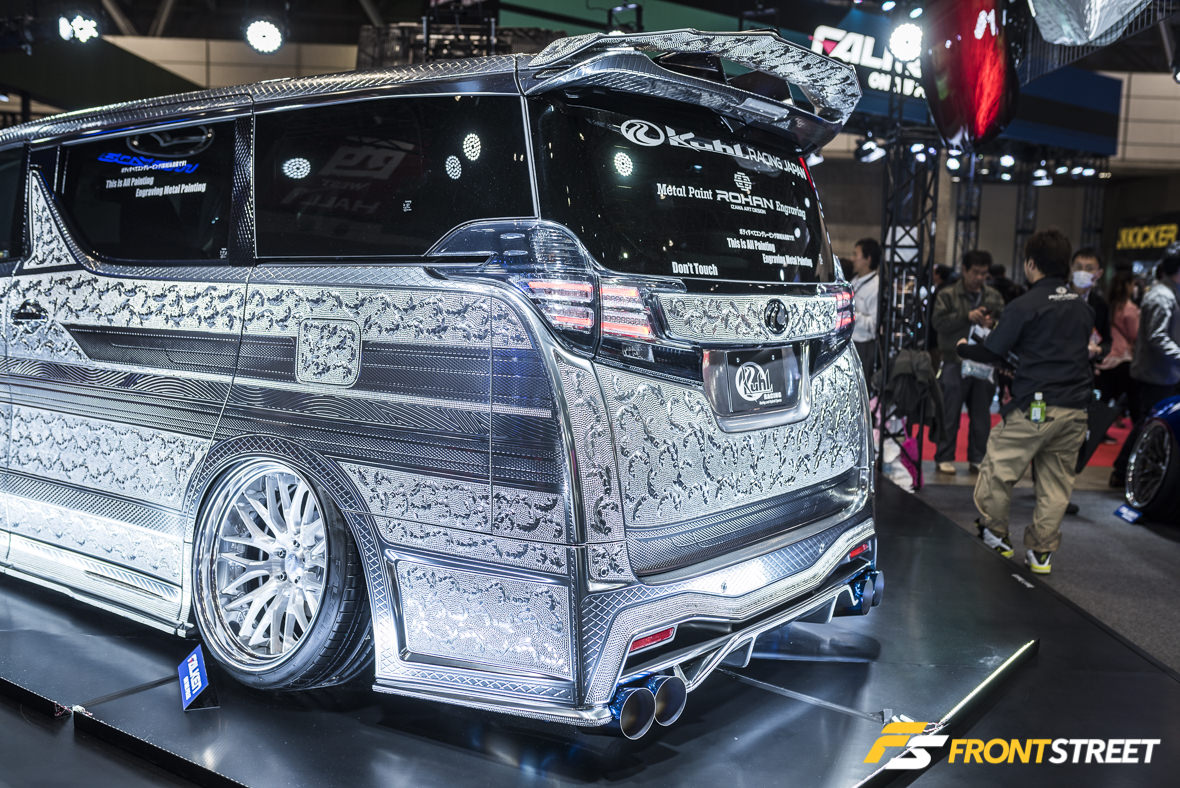
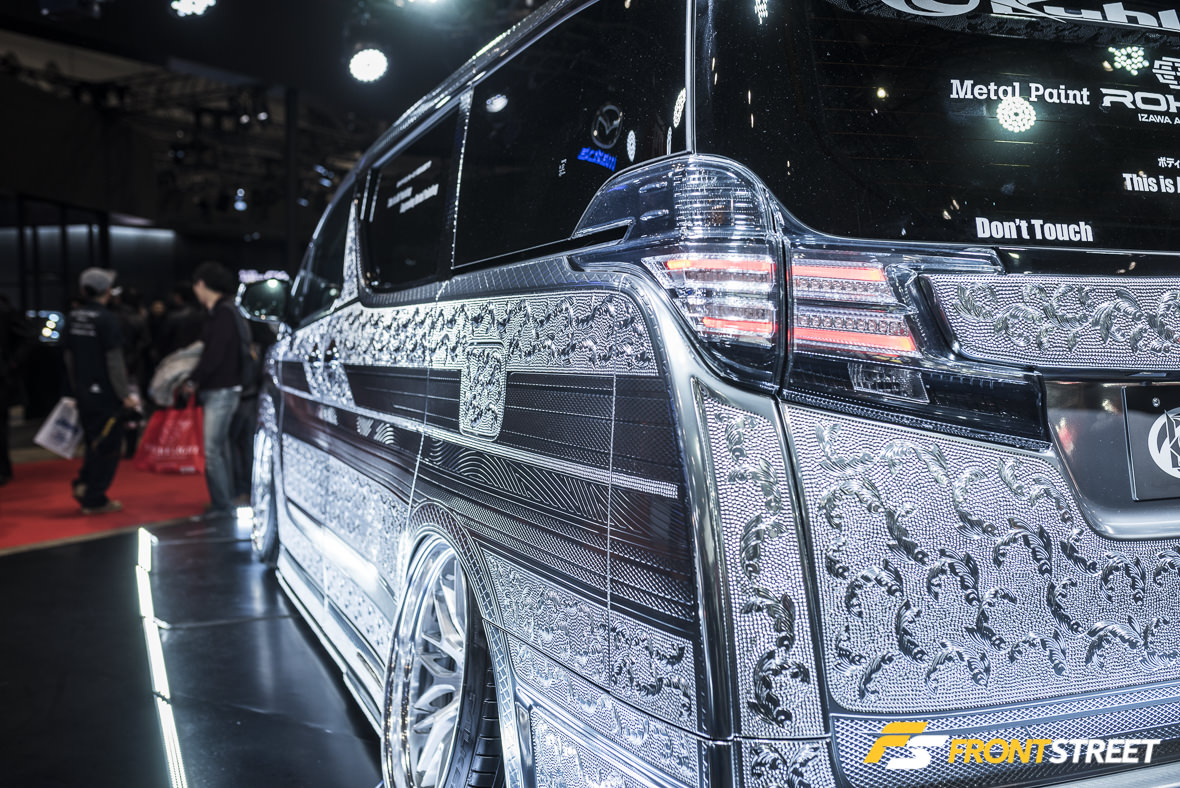
OK, prepare for more blabbing about intricacies like I always do with an opportunity to show off the cars of Kuhl Racing. They just never disappoint; here they’ve enveloped a giant Toyota Vellfire van in their body panels and accompanied it with hand-engraved metal paint from Rohan Izawa Art Design. Each car they produce is still astonishing, and although I haven’t had the chance to see this particular car in person, I’m sure the quality is on par with their usual standard.
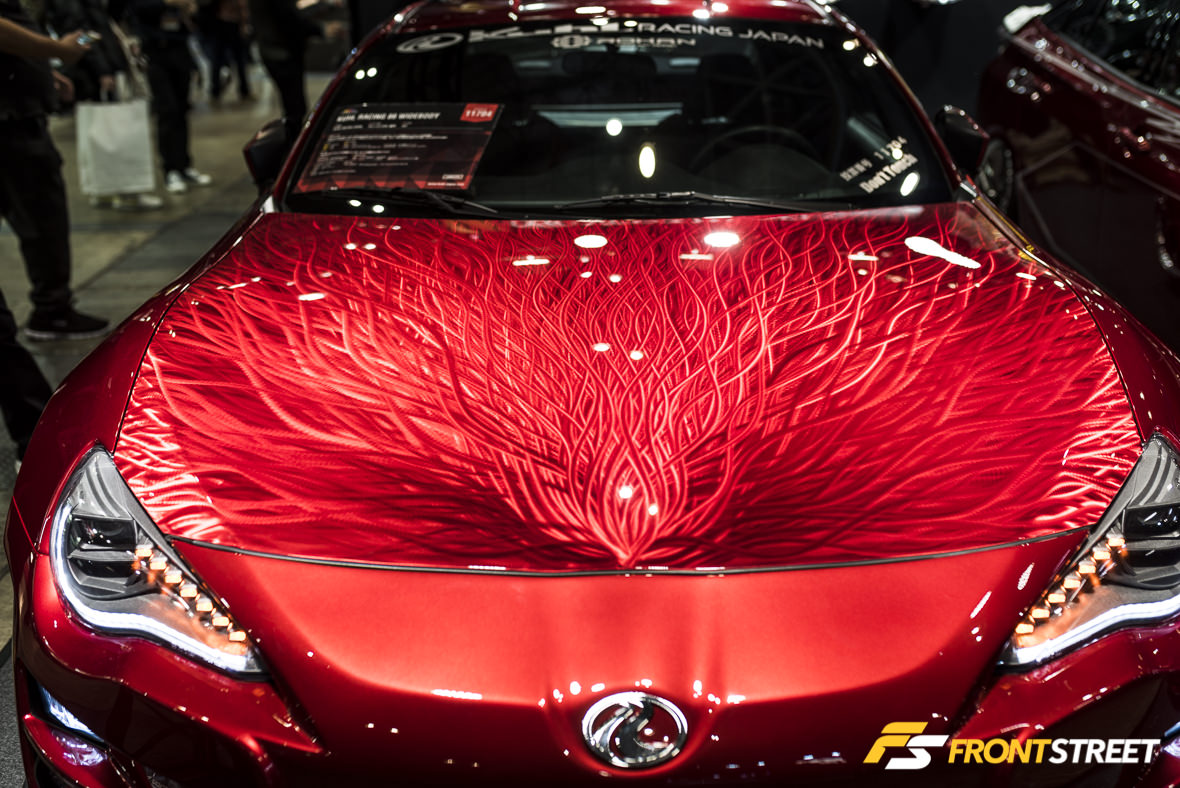
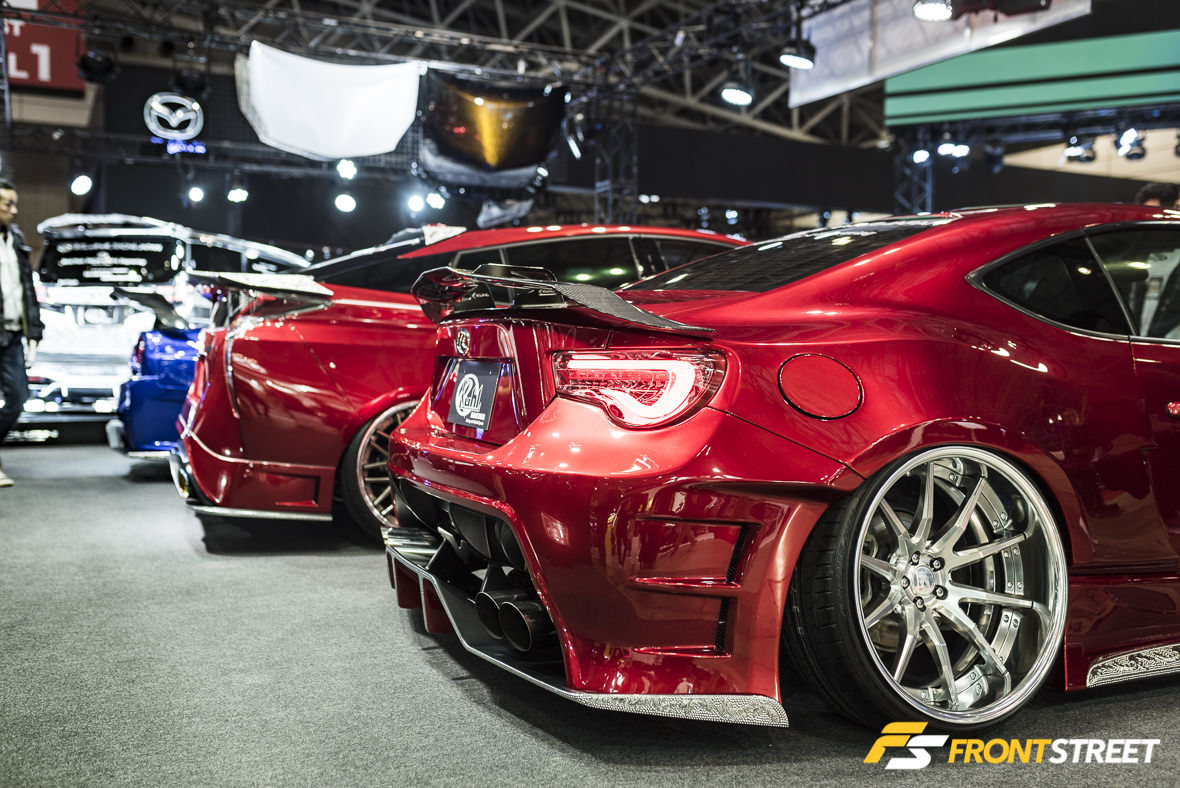
The other cars in their arsenal all hosted small-engraved metal details, and their custom paint design on the hood. I also really don’t understand how they create this crazy multilayered effect in the paint on their hoods. If you know how it’s done, please send me an email and explain it the process.
The girls of Tokyo Auto Salon are their own sub-culture and attraction inside the event, containing their separate fan base, autograph signings, and of course creepy photographers, most of whom are only at the event to photograph the girls. It’s an interesting cultural divide that we view as inappropriate and questionable in the USA.
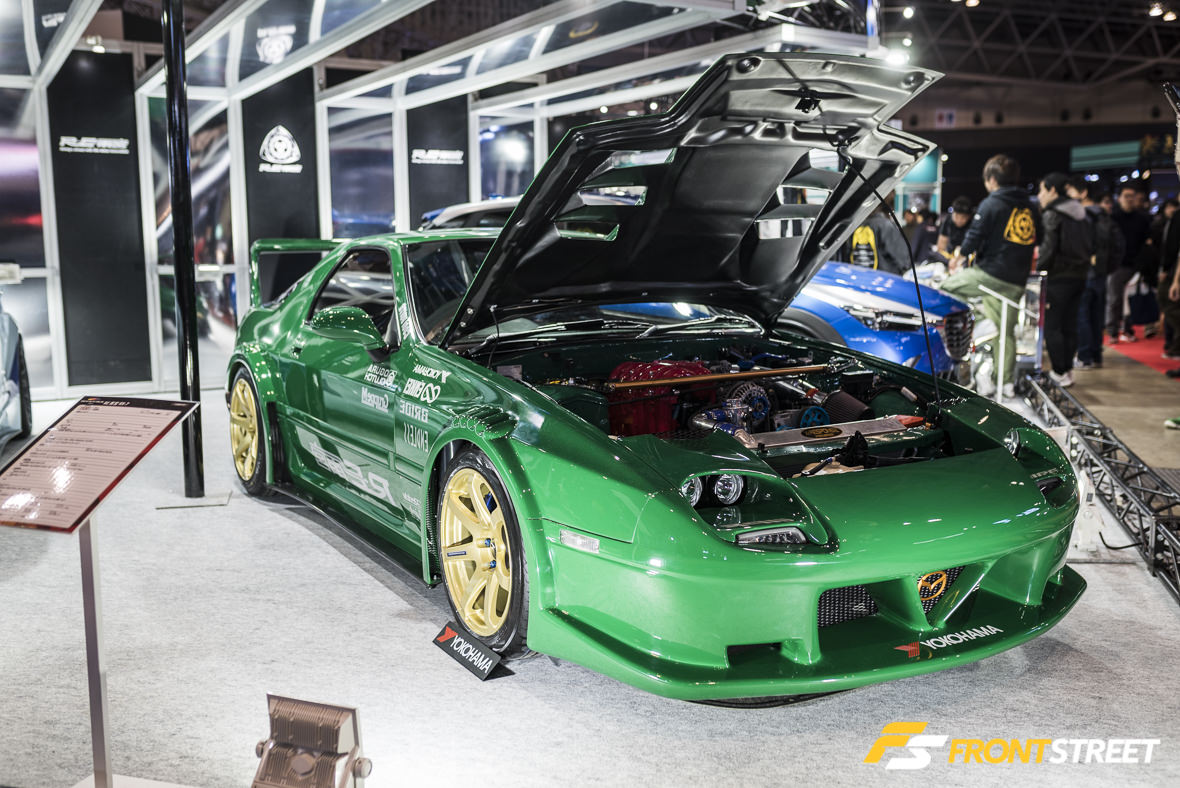
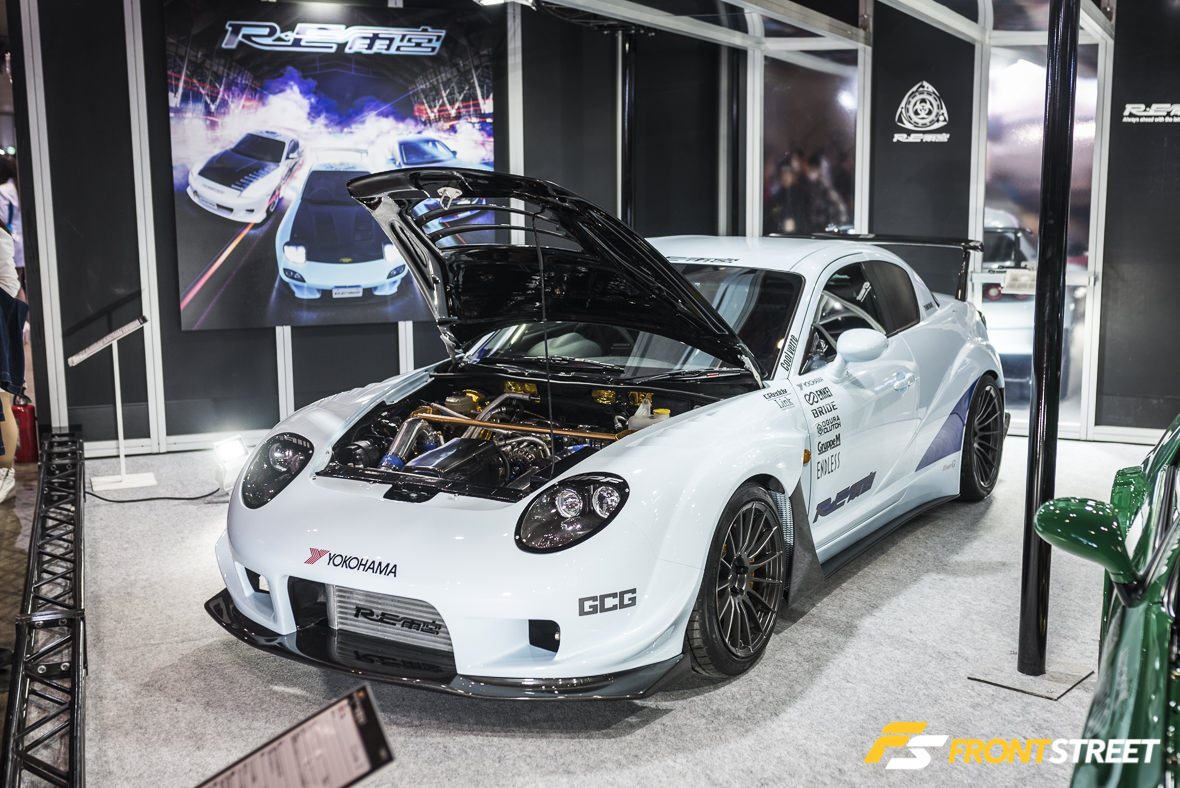
Rotary tuning titan RE Amemiya is famous for altering the fascia and powerplant of Mazda’s lineup; this year they have a 20B-equipped green FC3S RX-7 and an RX-8 with converted headlights on display. Both vehicles use Enkei wheels mounted to their hubs, as with all RE Amemiya builds.
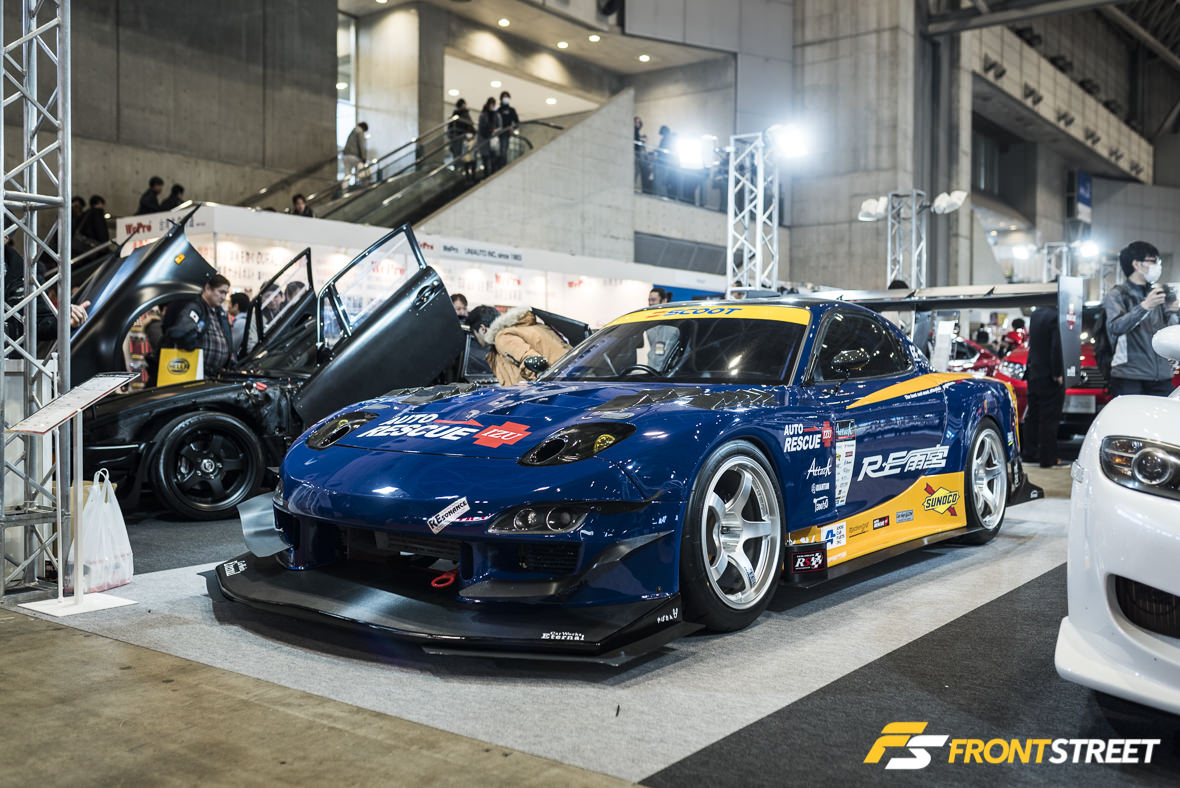
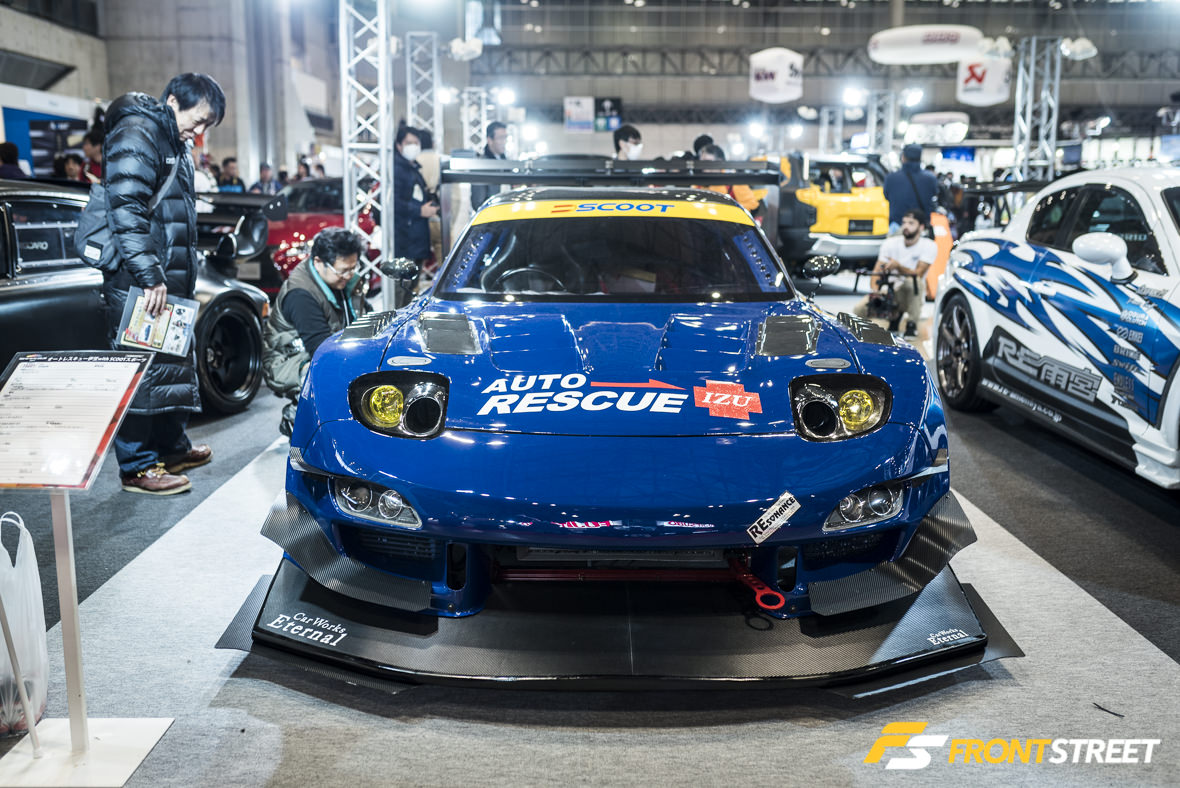
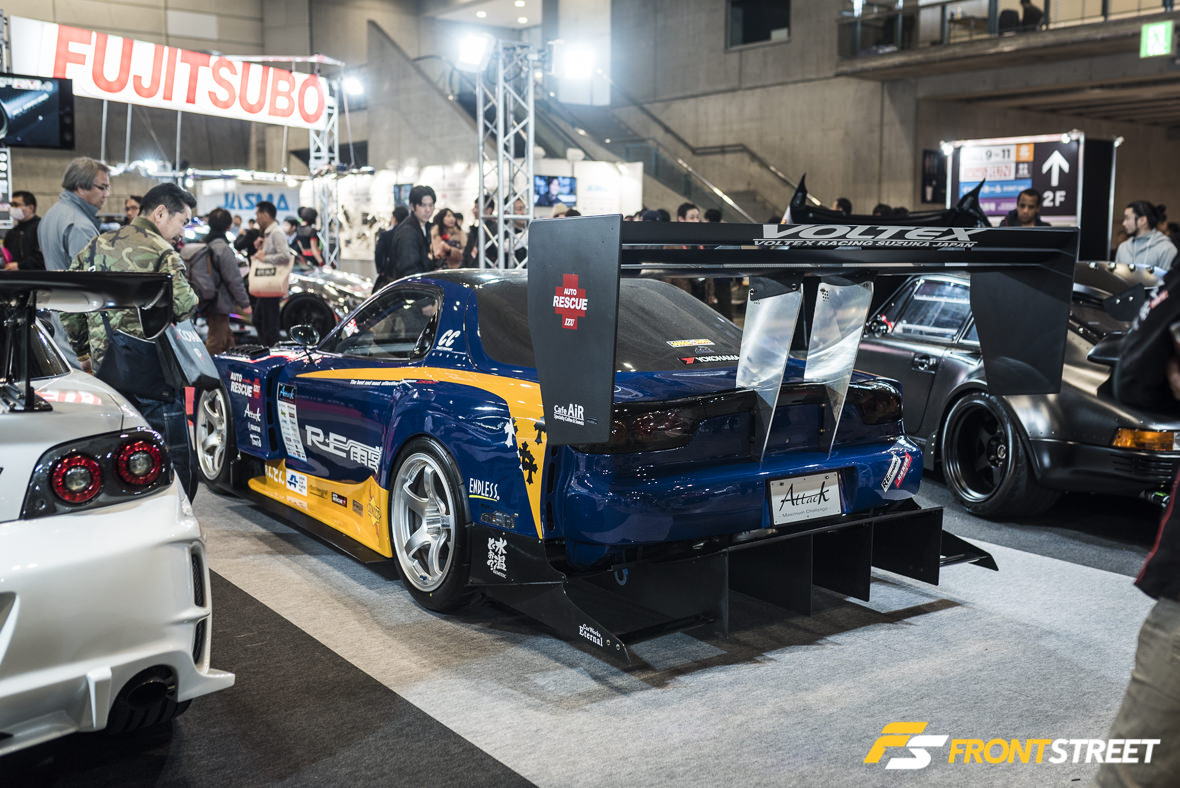
The updated Auto Rescue Izu time attack FD3S RX-7 was found in a similar location. Built using numerous pieces from Japanese tuning elites like RE Amemiya, Scoot, Car Shop Glow, and Voltex, this car has a hectic winter season ahead of it as time attack events are currently in full bloom in Japan.
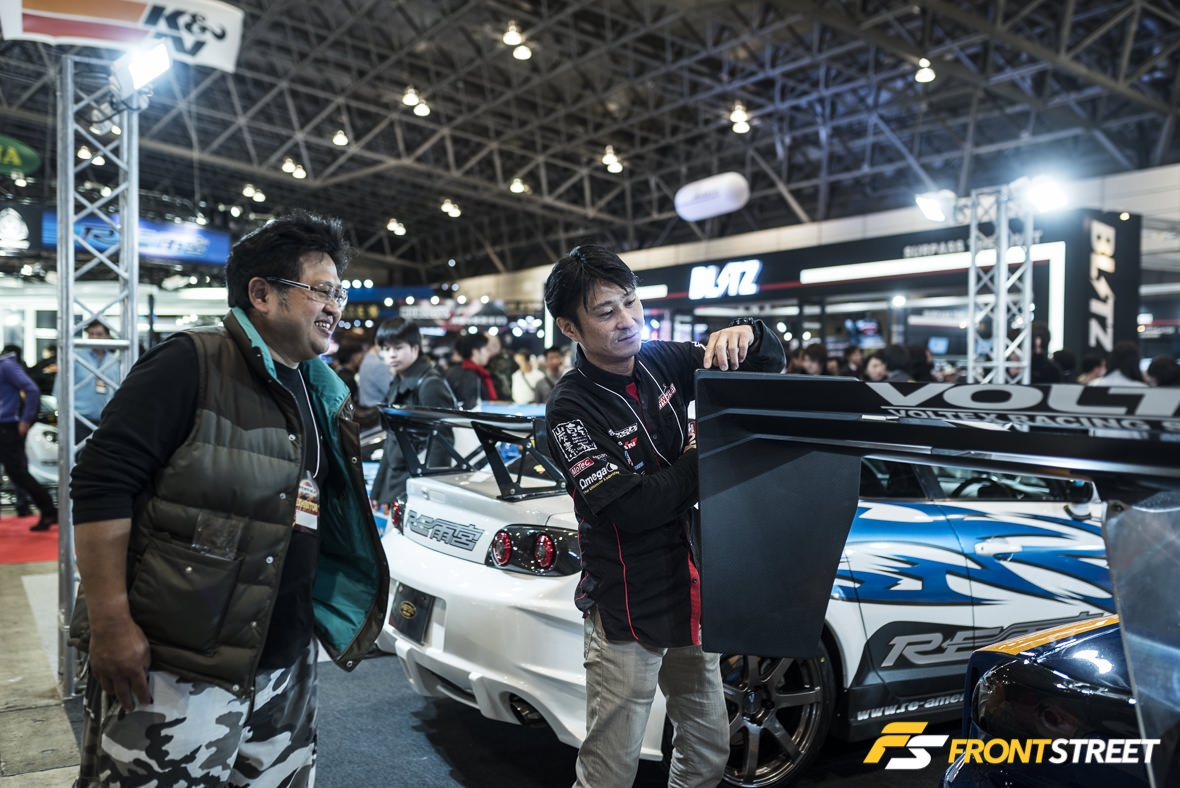
Even Under Suzuki stopped by to check out a fellow time attack competitor’s car.
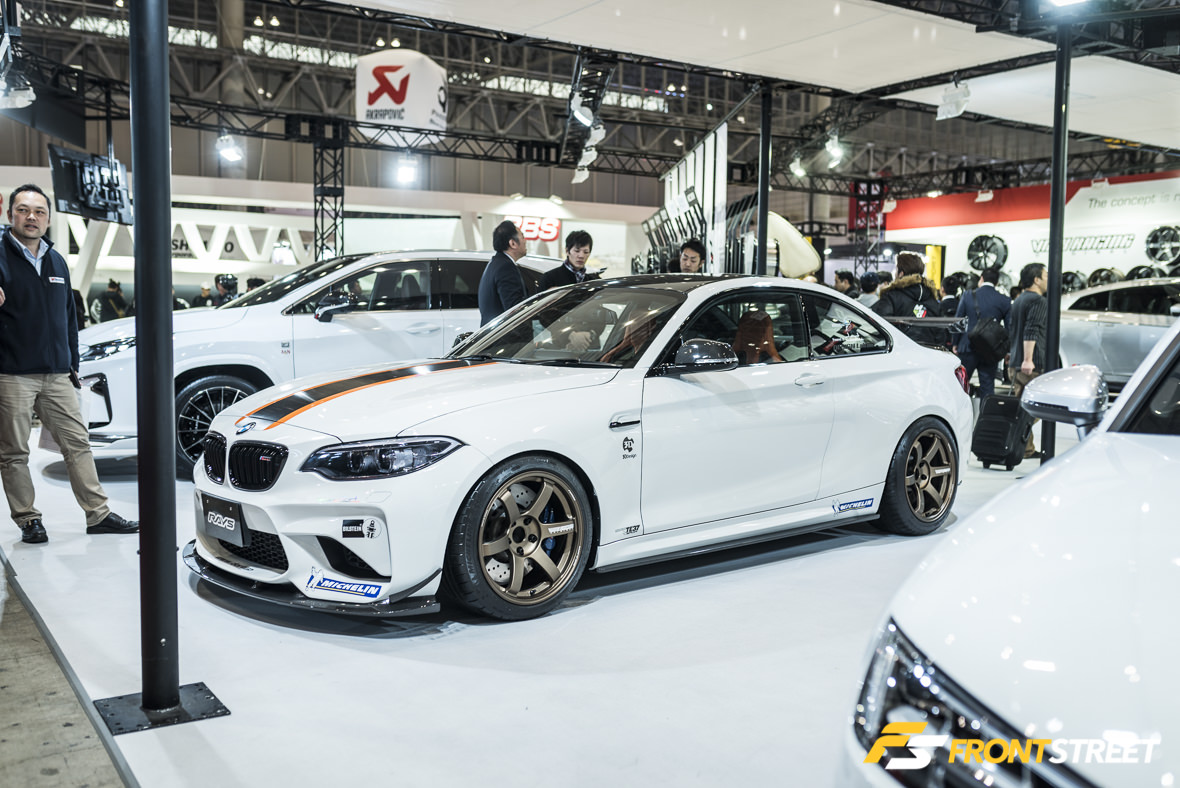
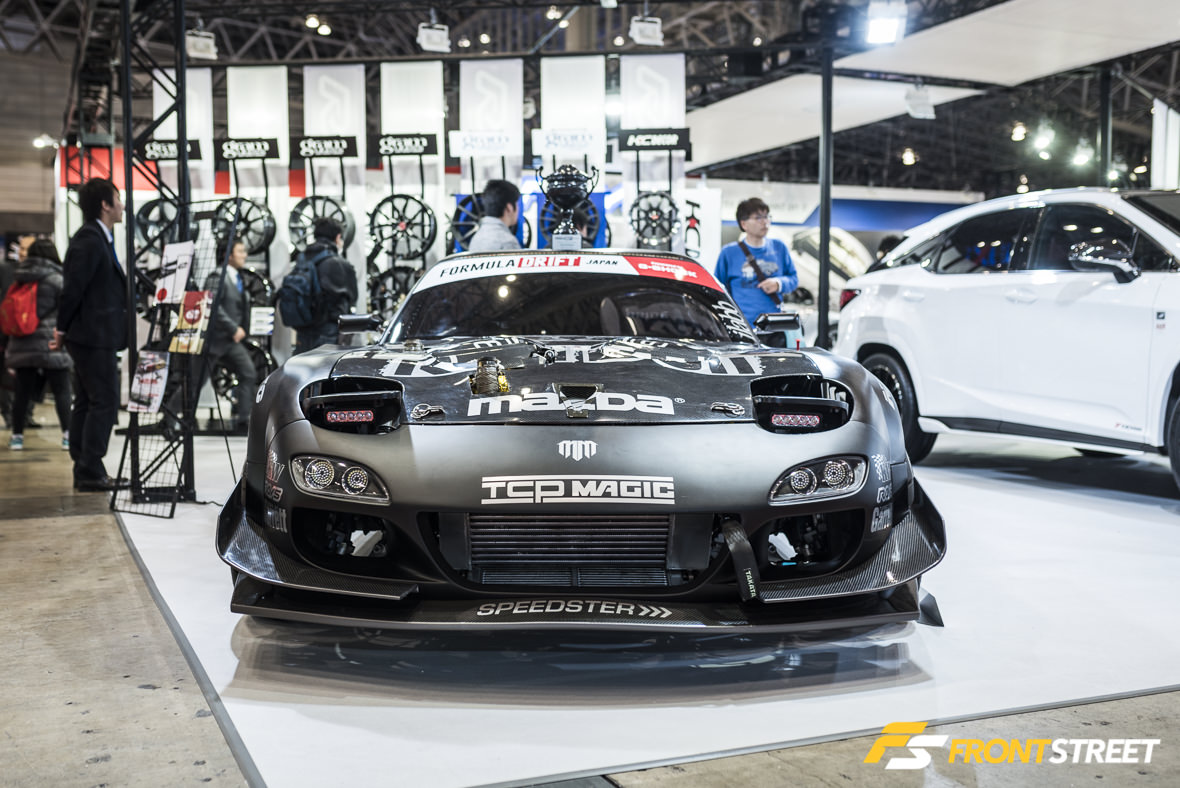
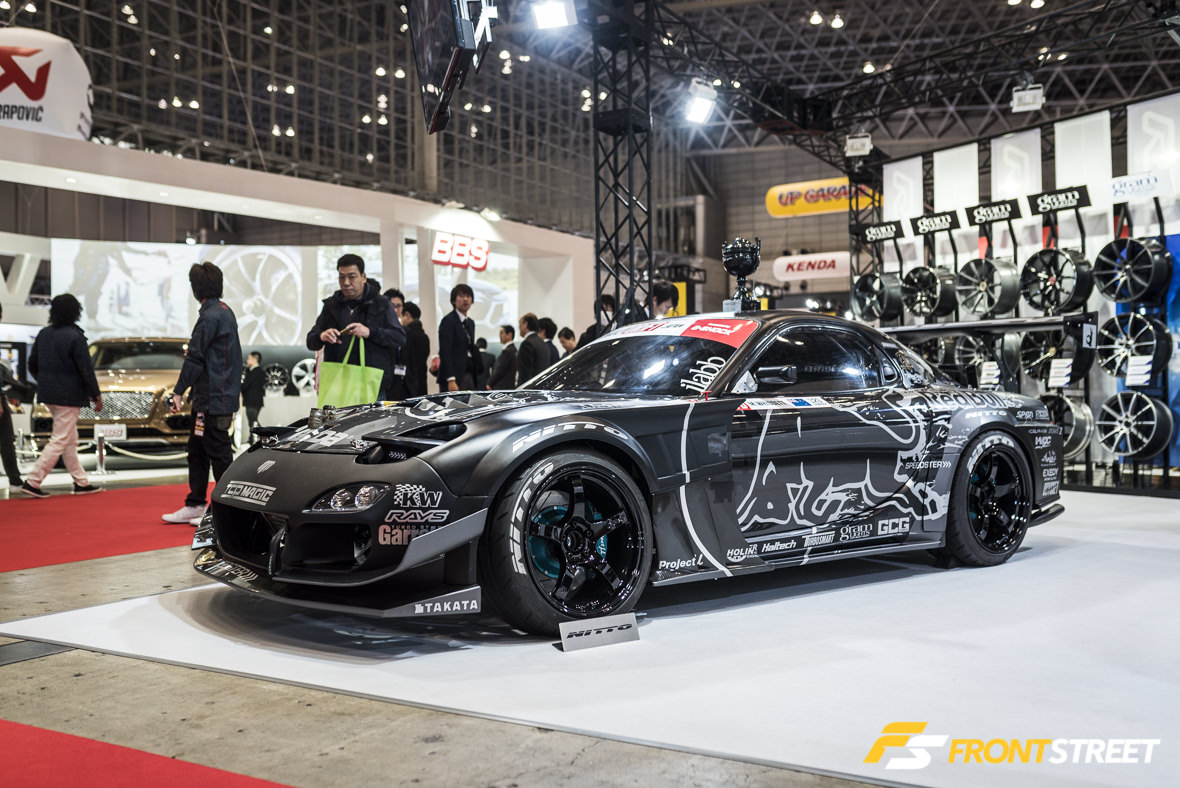
RAYS Engineering is a colossal manufacturer in Japan, responsible for some of your favorite authentic Japanese wheel designs; RAYS is also the parent company of Volk Racing and Gram Lights wheels. While the TE37 Ultra isn’t exactly a new design, it looks right at home on the white BMW M2 example in their booth. The Bavarian coupe took a spot next to Mad Mike Whiddett’s Formula Drift Japan competition car with the new Gram Lights 57CR wheel.
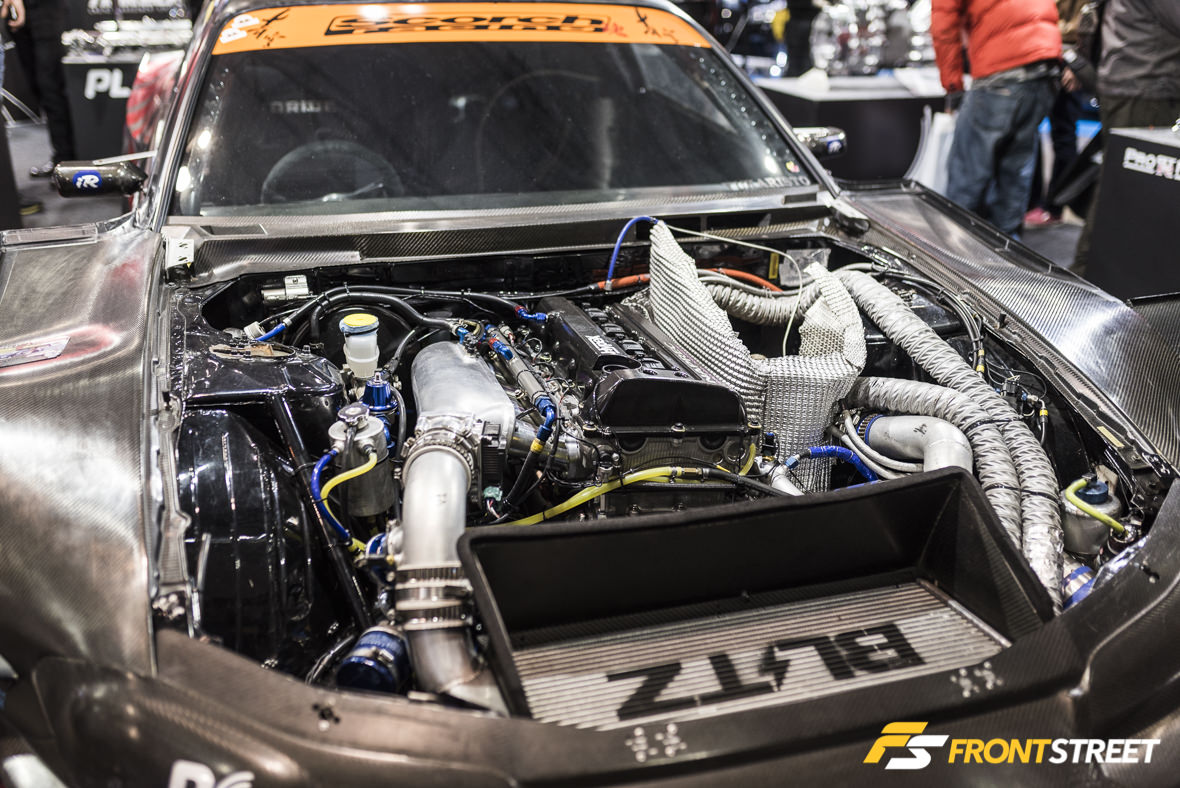
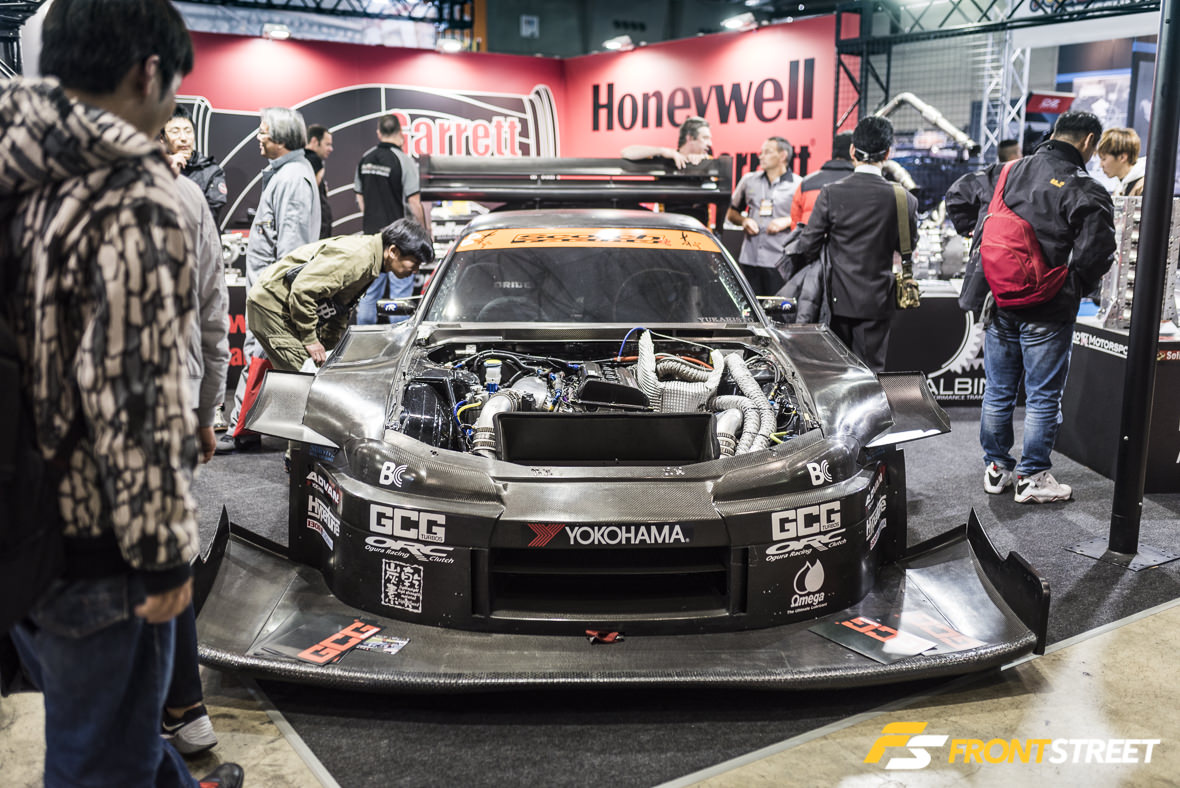
In the Garrett by Honeywell booth rested one of the most recognizable time attack cars – and current Tsukuba quickest lap record holder – Under Suzuki’s Scorch Racing Advan Nissan S15 Silvia. This car has been built and rebuilt so many times in recent years, it’s hardly identifiable as the street car it once was. Today it wears an exterior skin made entirely of dry carbon fiber, as the Nissan has had aerodynamic development efforts focused onto each panel of the body. Its heavily modified SR20DET engine uses a Garrett turbocharger to generate obscene horsepower and set lap records at Japan’s most infamous time attack racetrack.
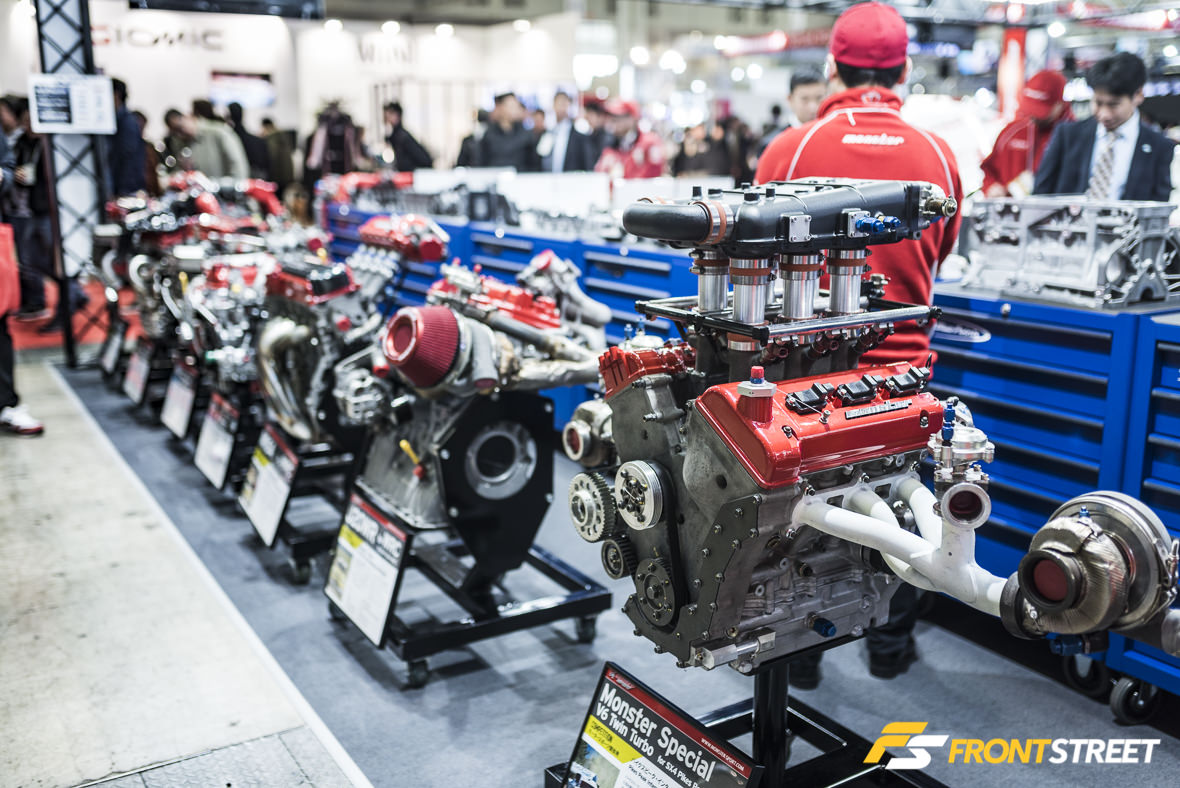
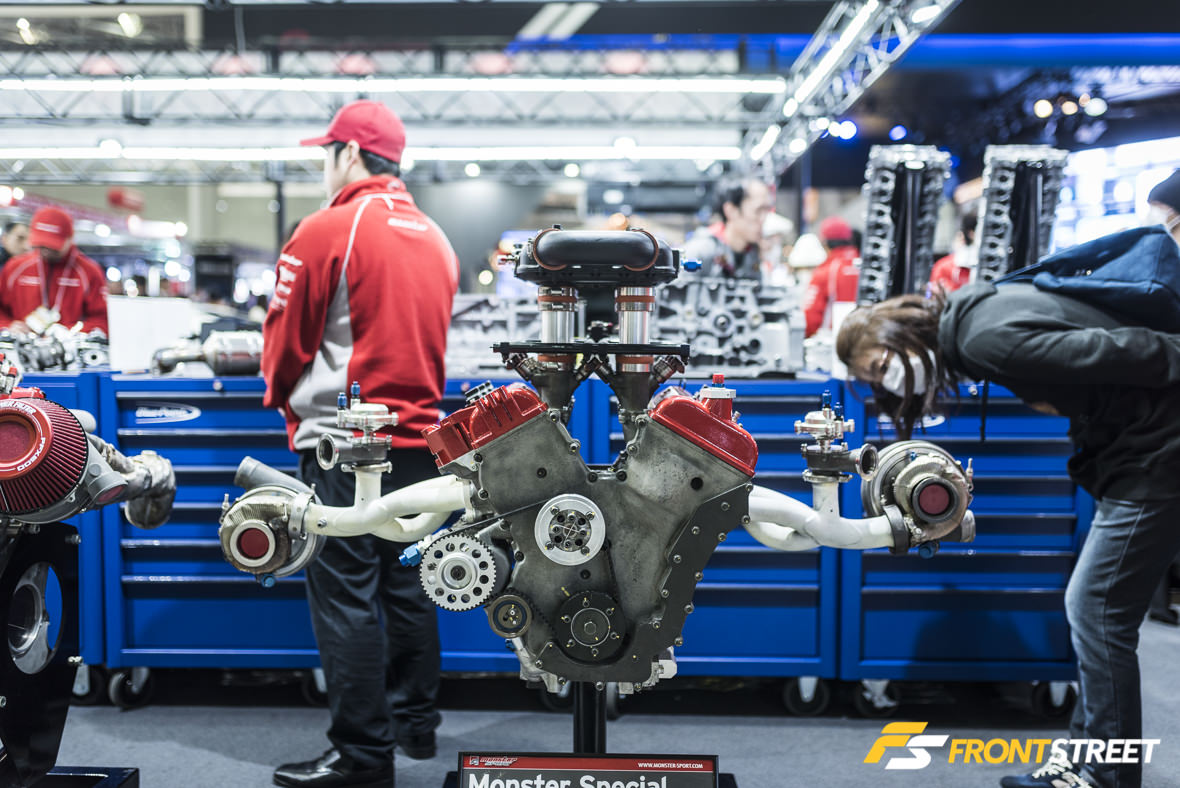
Fans of the Gran Turismo video game series, Suzuki cars, or the Pikes Peak International Hill Climb may be familiar with Monster Tajima. He drove the ridiculously fast Suzuki Escudo/SX4 up Pikes Peak once upon a time, but you may remember it as the unbeatable rally car in Gran Turismo that everyone used. His company Monster Sport creates high horsepower slugs for top-tier motorsports programs, but the star of his booth was the Monster Special twin turbo V6 engine from the Suzuki SX4 Pikes Peak car.
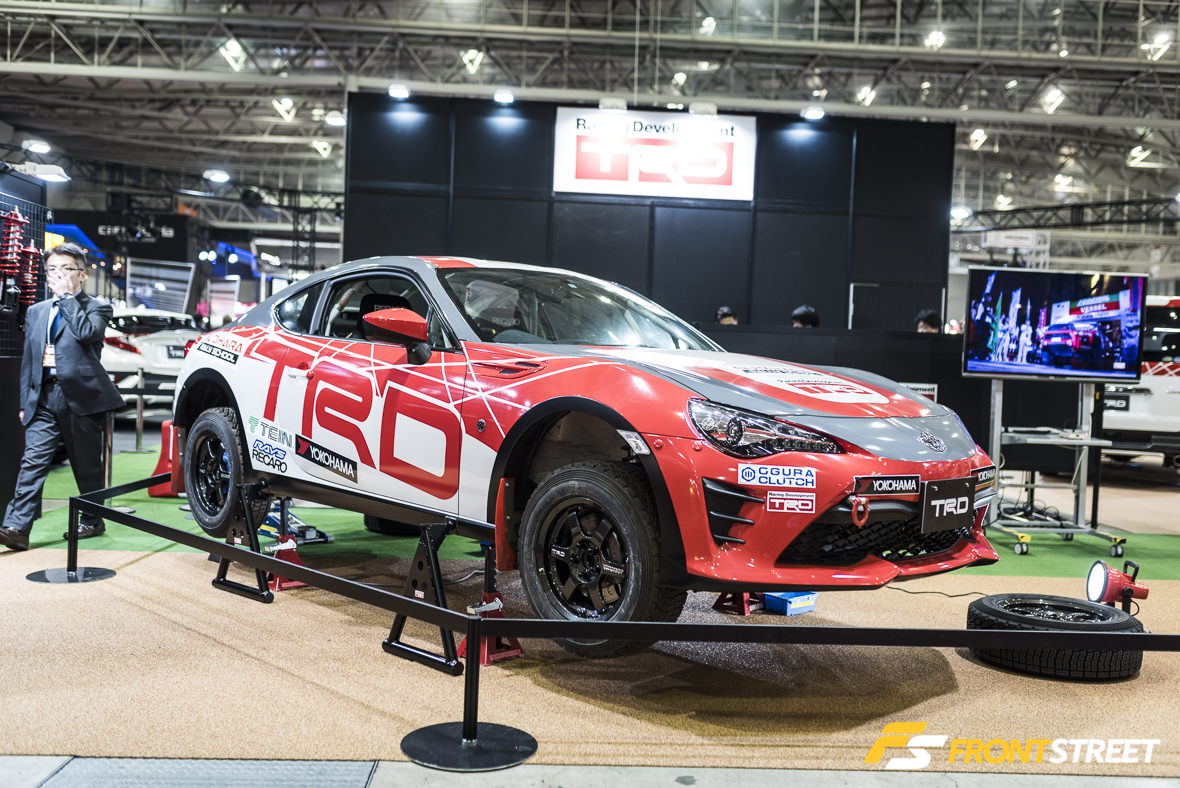
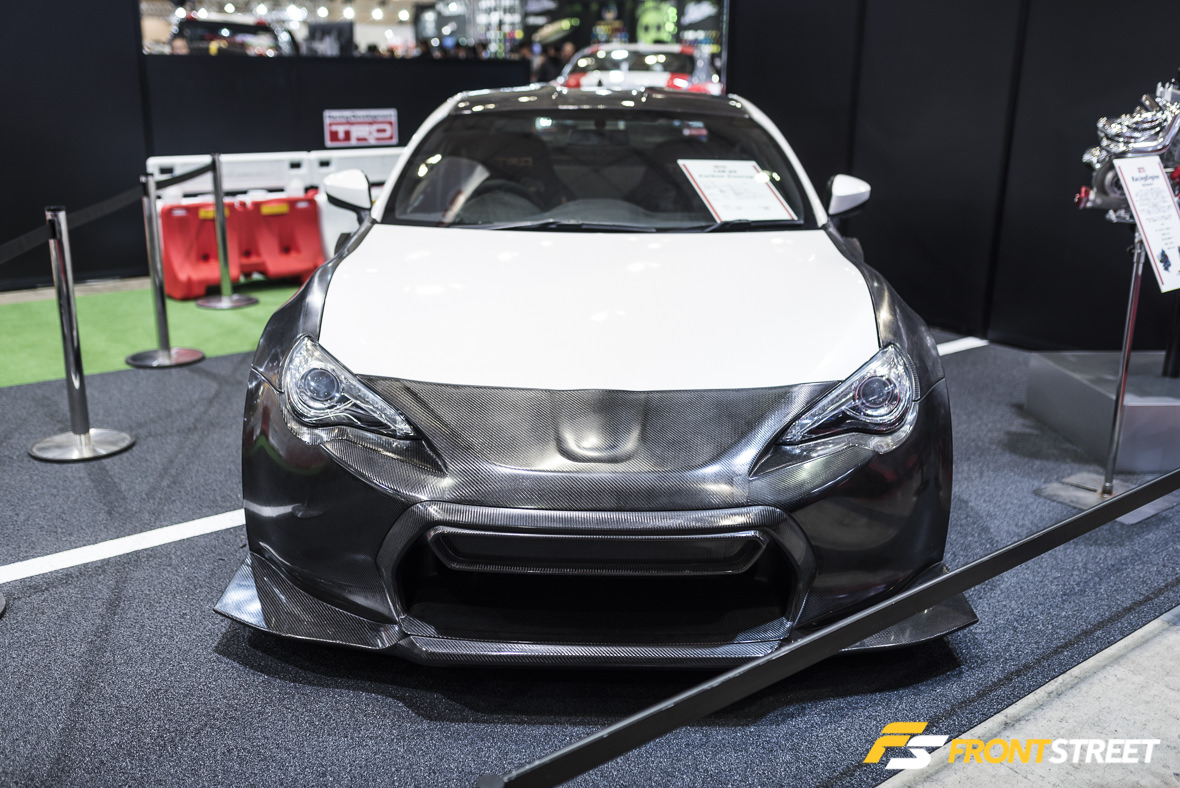
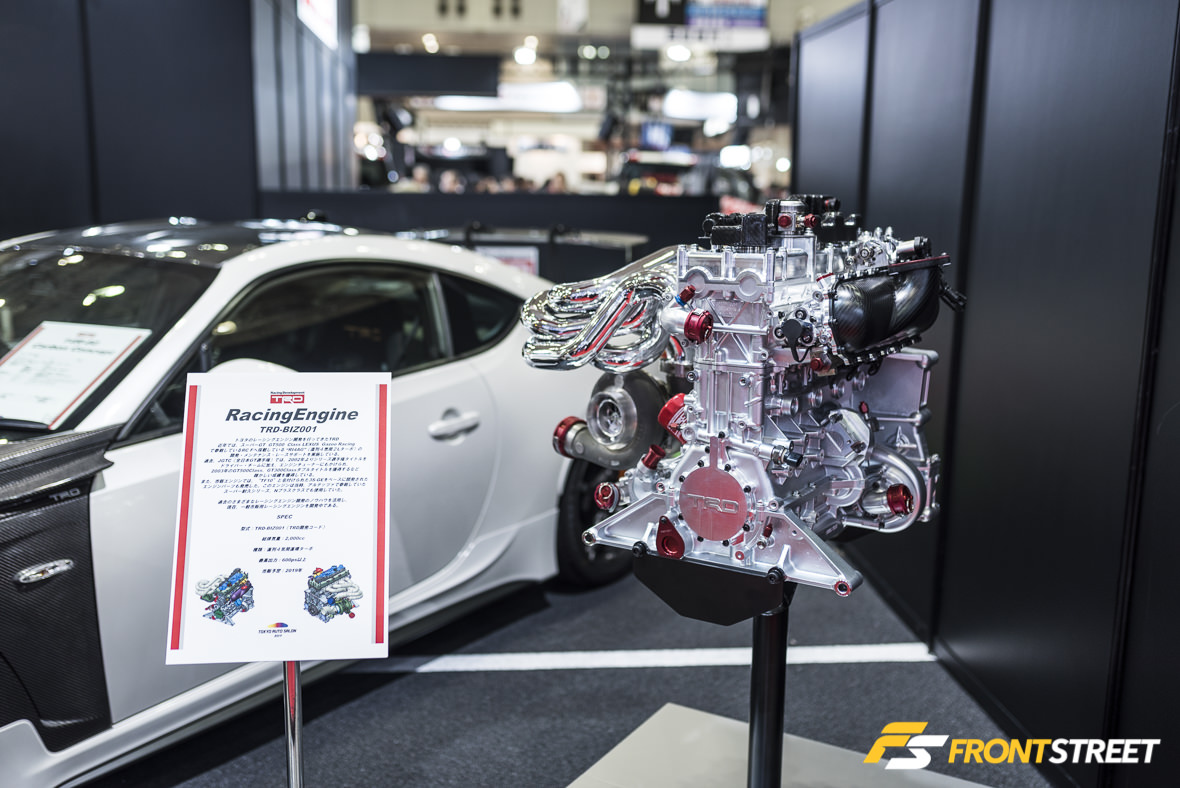
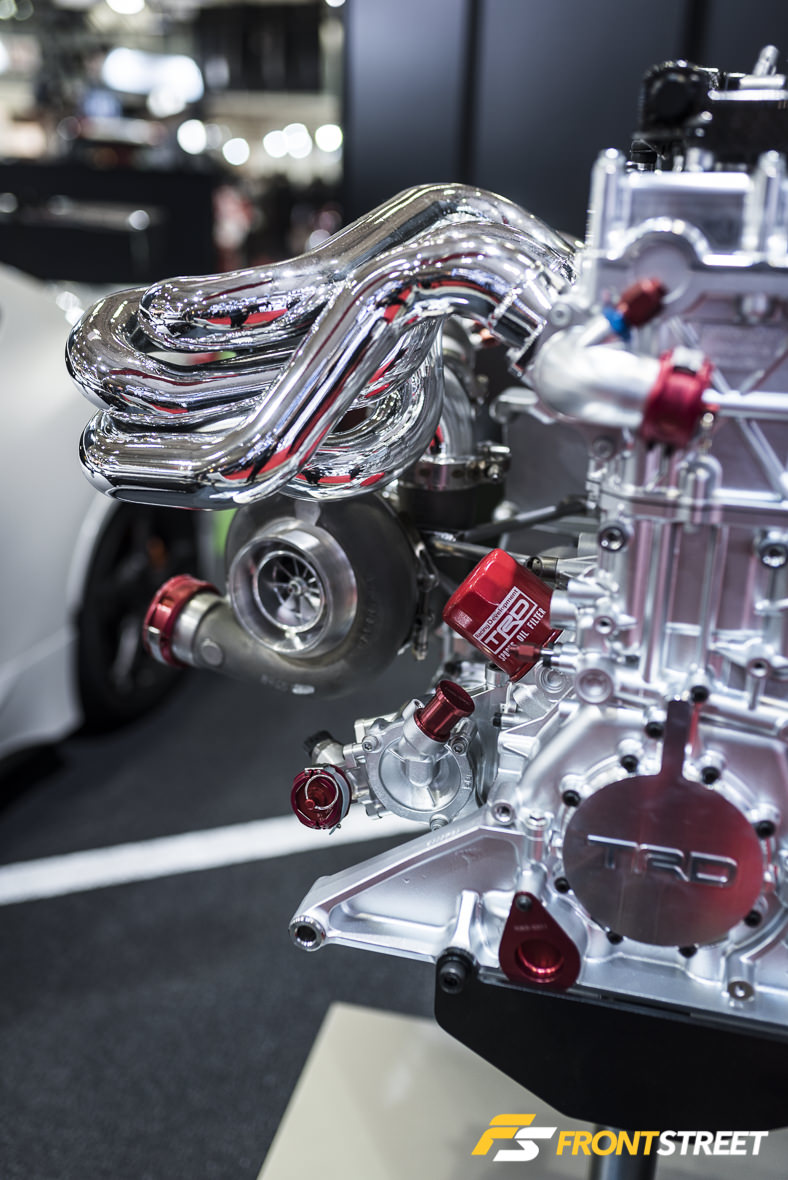
We’ll finish off part one of our TAS 2017 coverage with the latest offerings from Toyota Racing Development, which include this wide mouth carbon fiber front bumper and fender combination for the Toyota 86, and their 2.0-liter 600 horsepower BIZ001 engine set up for motorsports use. Don’t stop here though; there are a ton more images in the gallery below for your enjoyment! We’ll be publishing Part 2 next week, so put your email address into that little box at the bottom right of this page, and we’ll gladly send the article straight to your inbox.


































































































